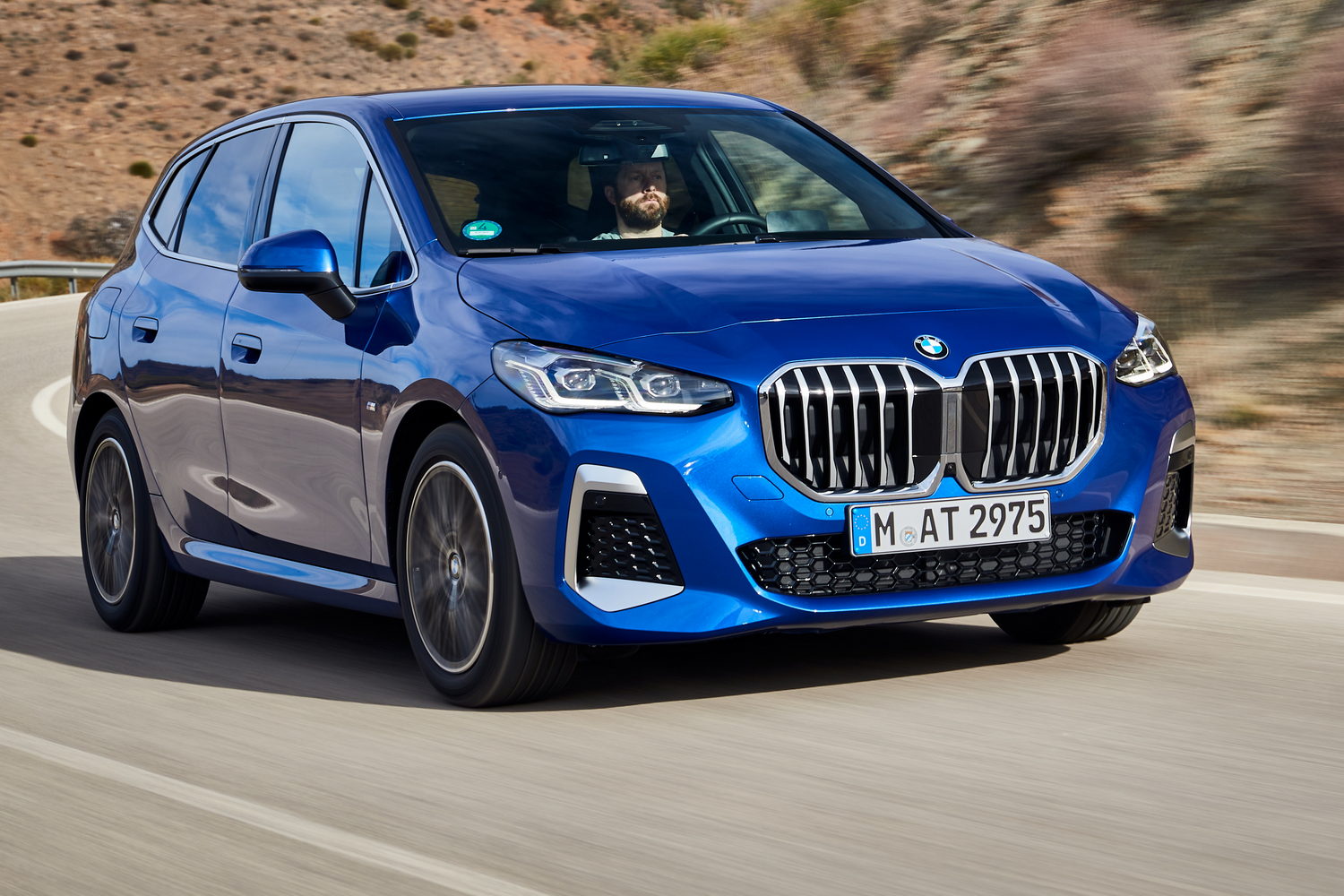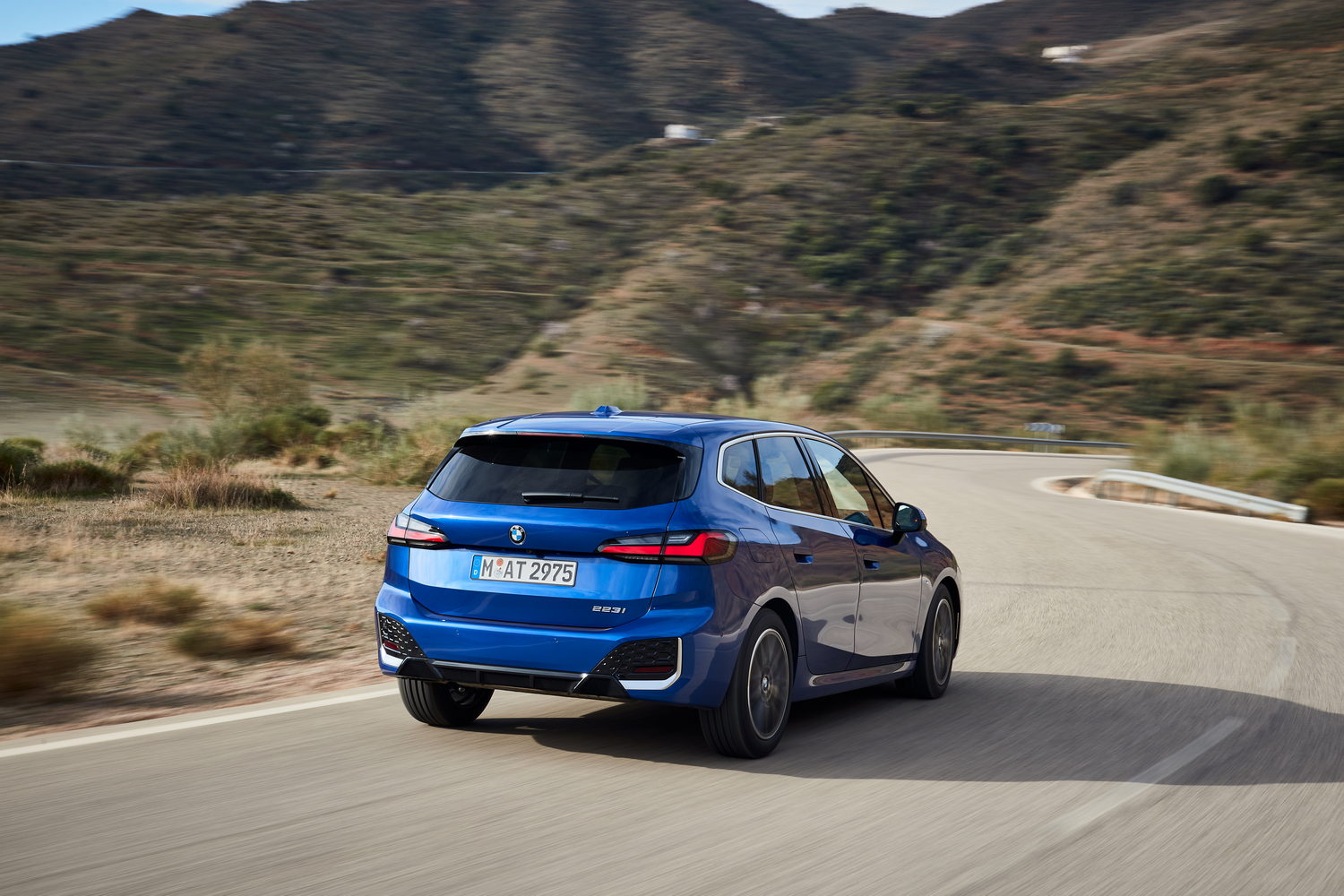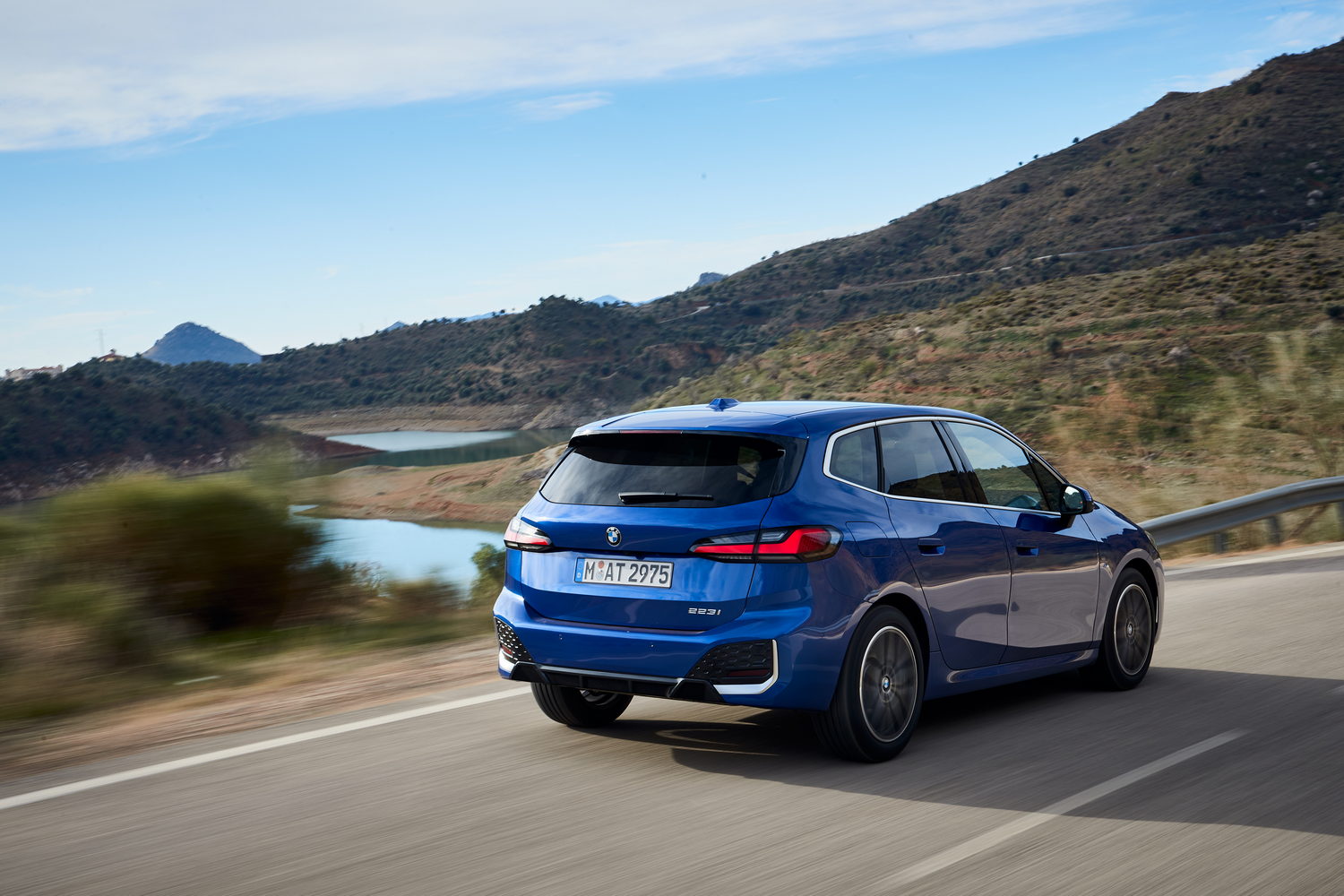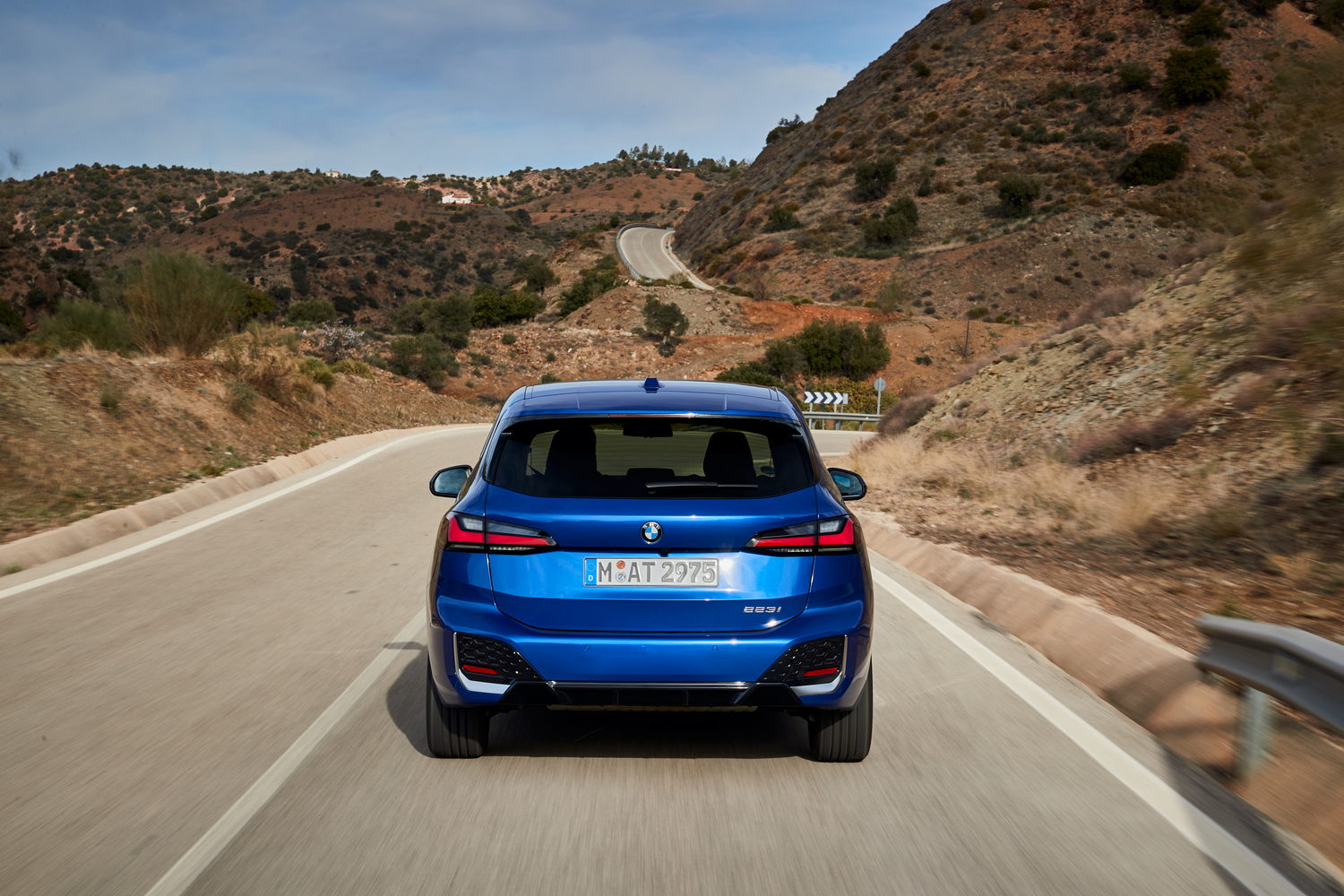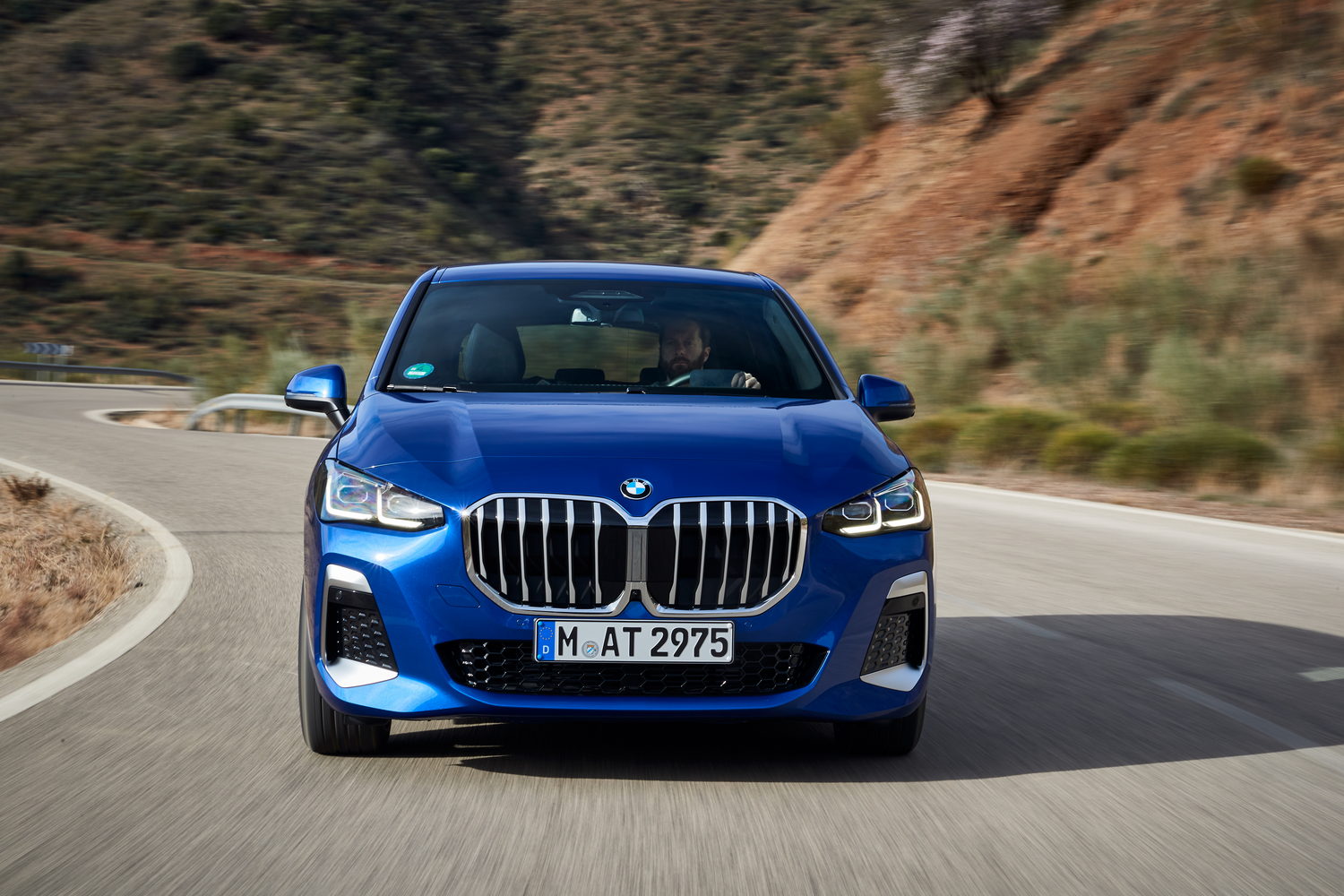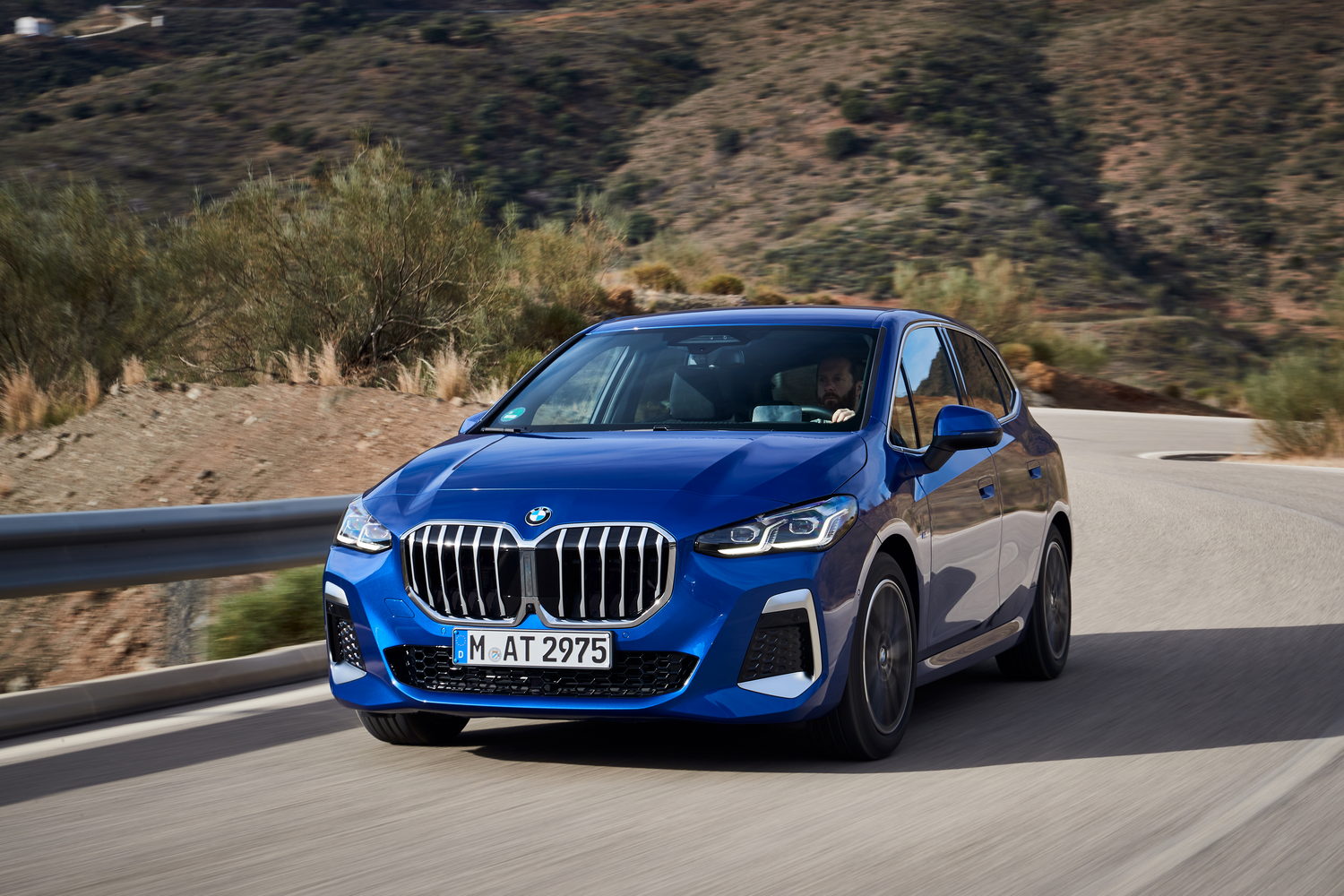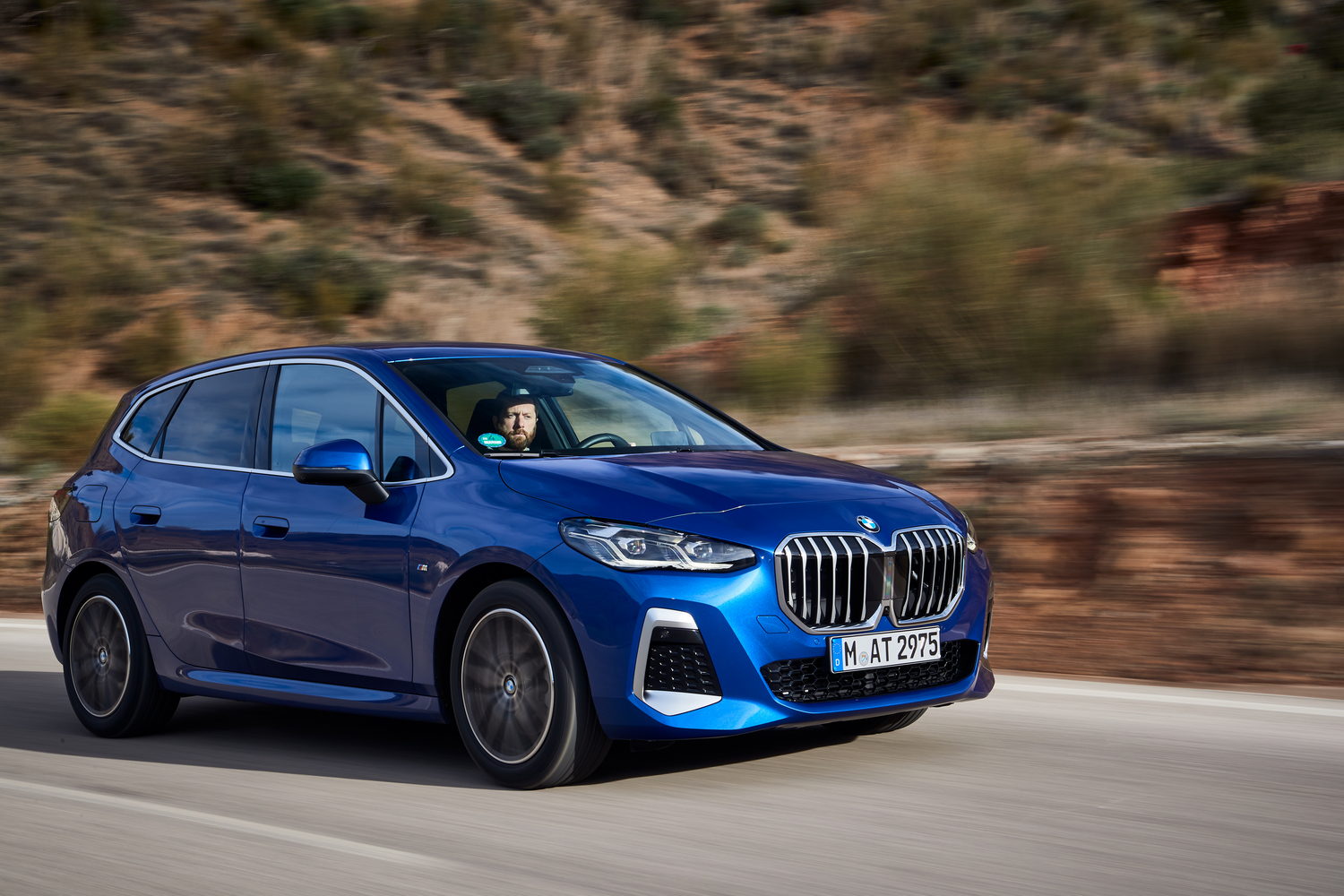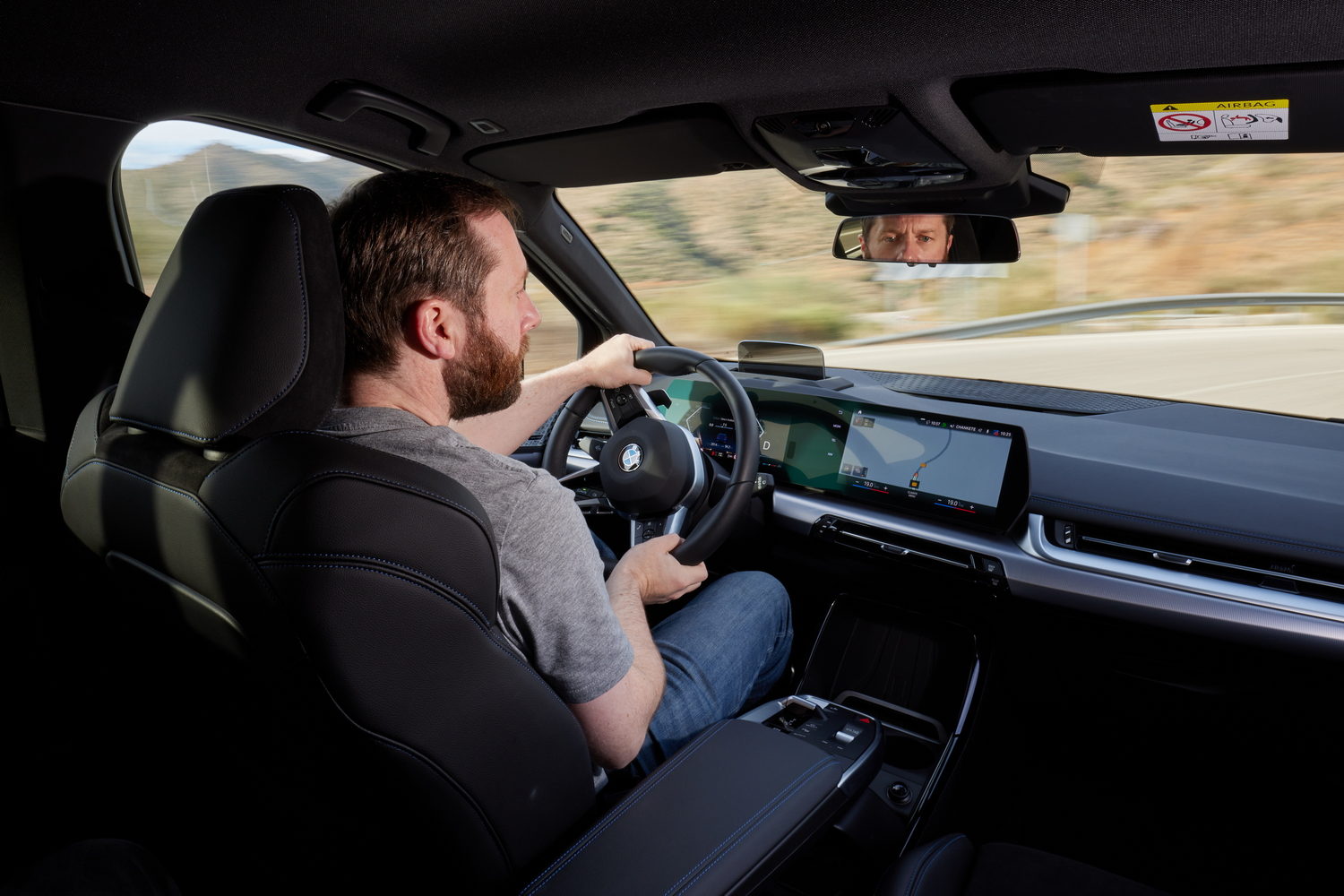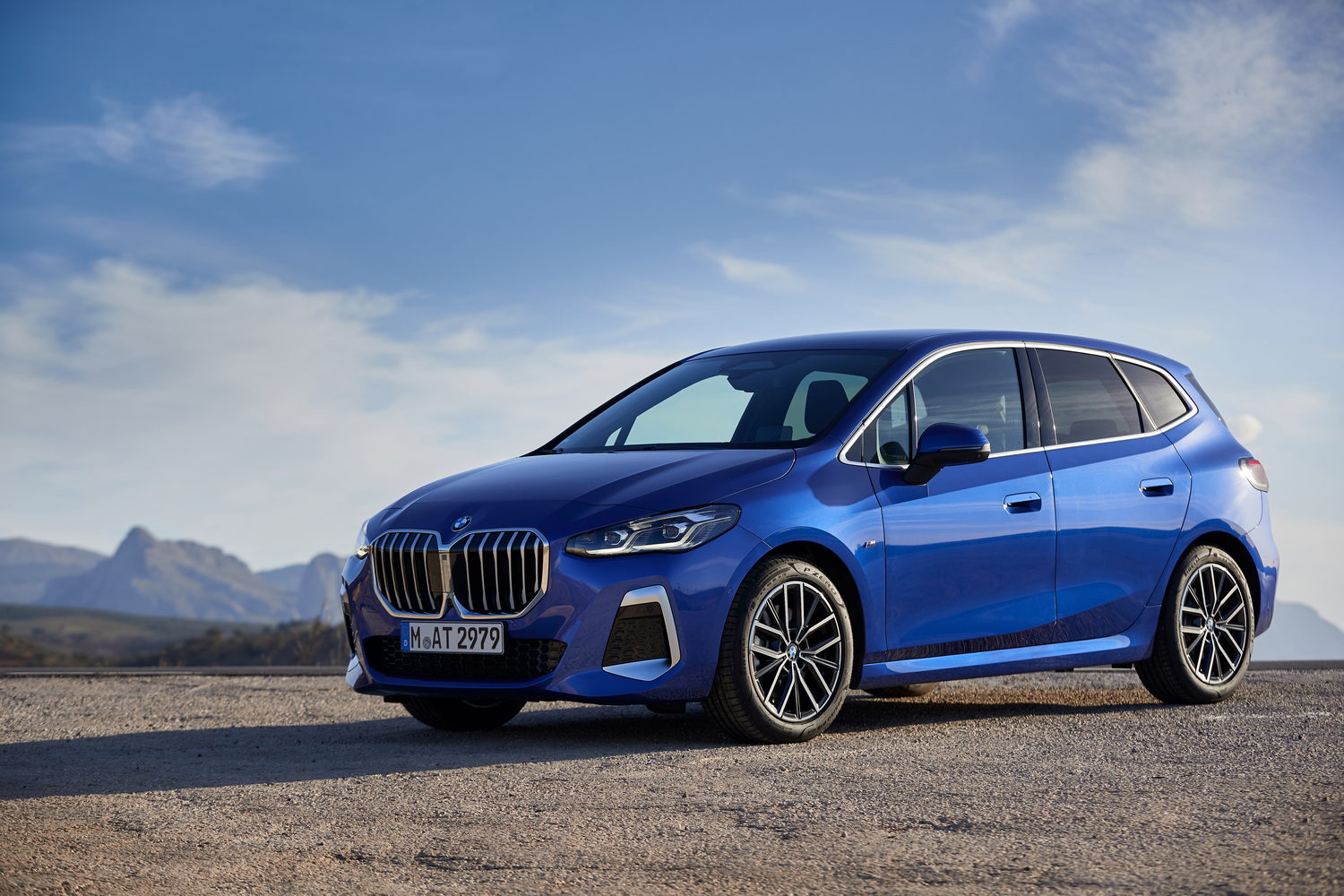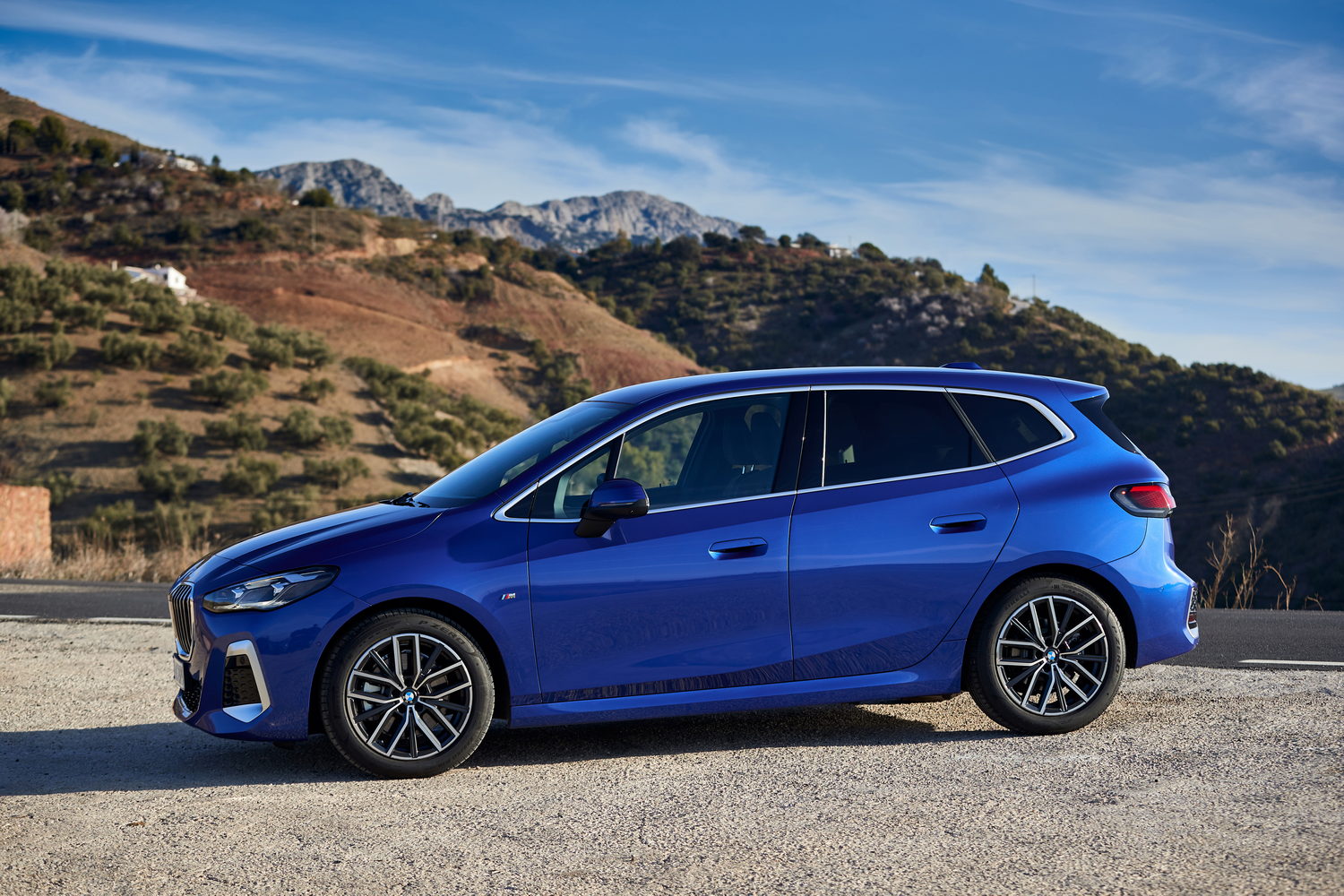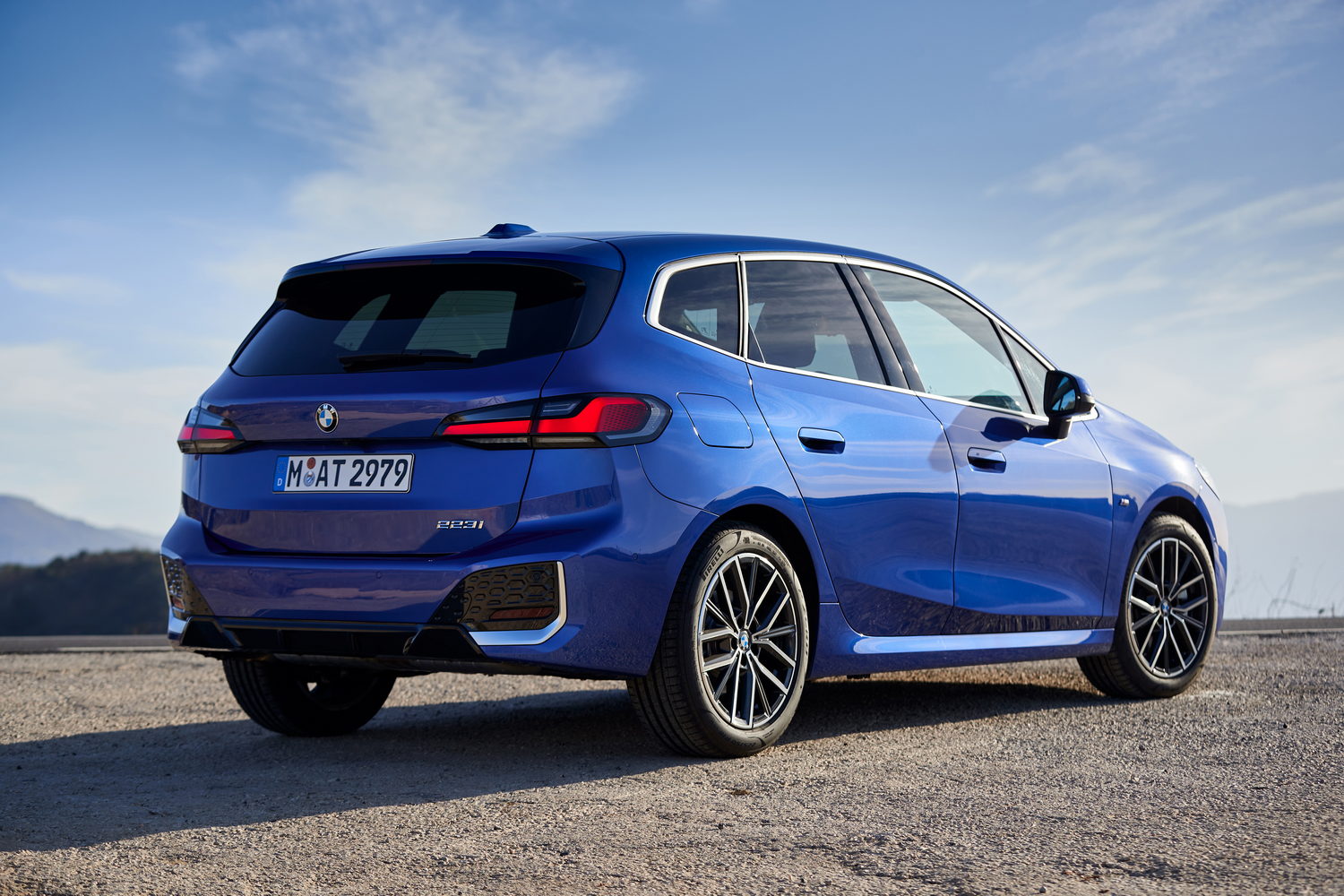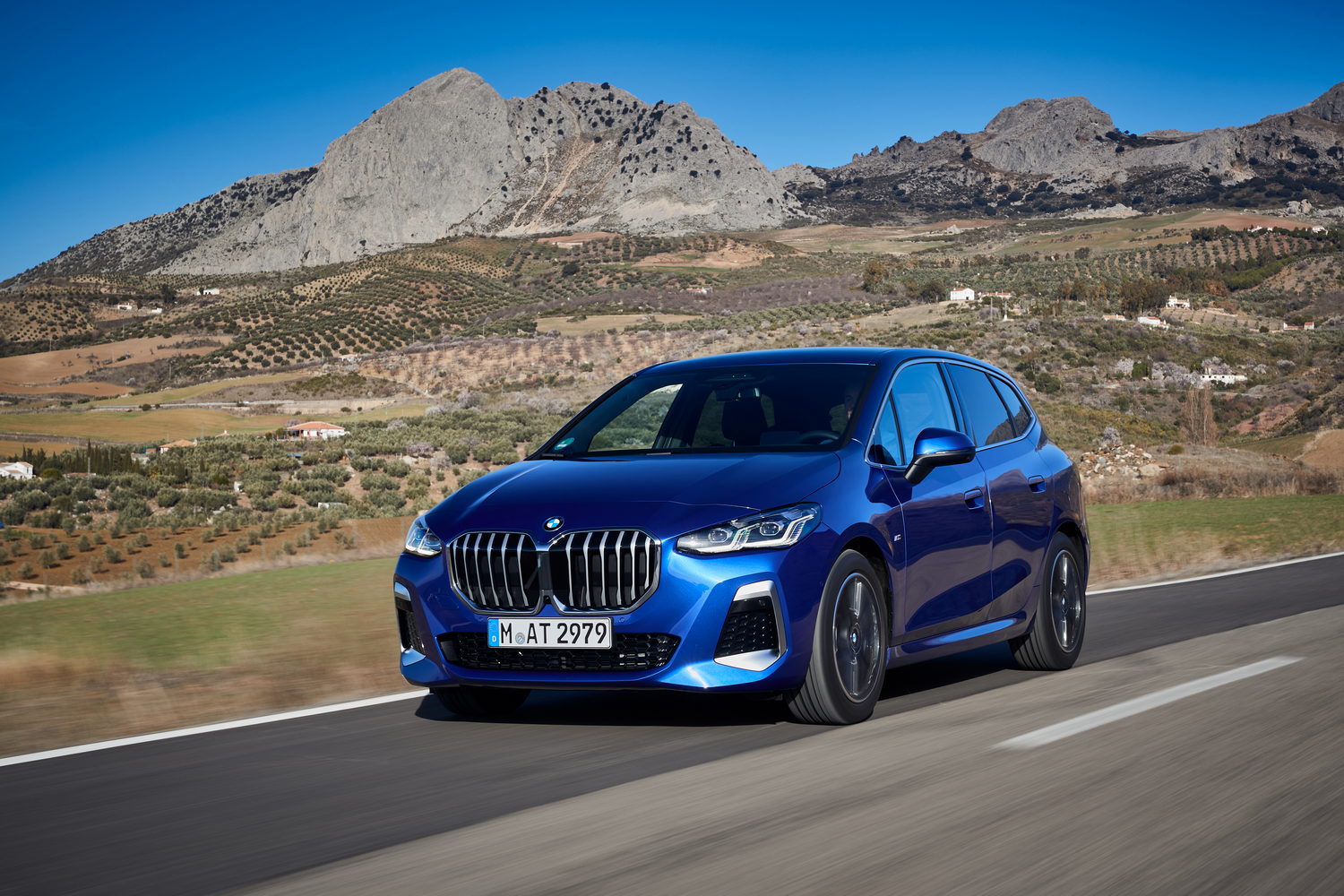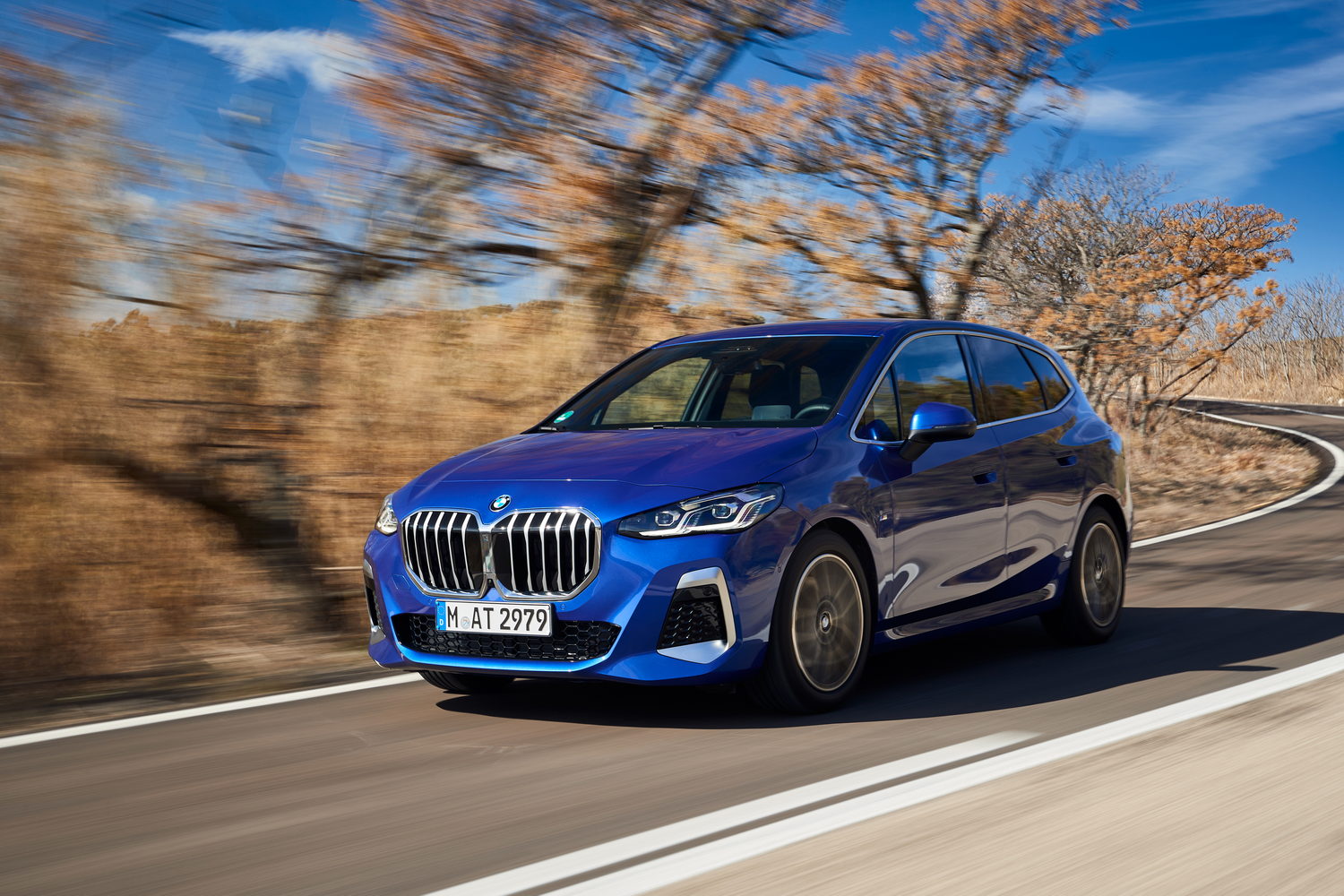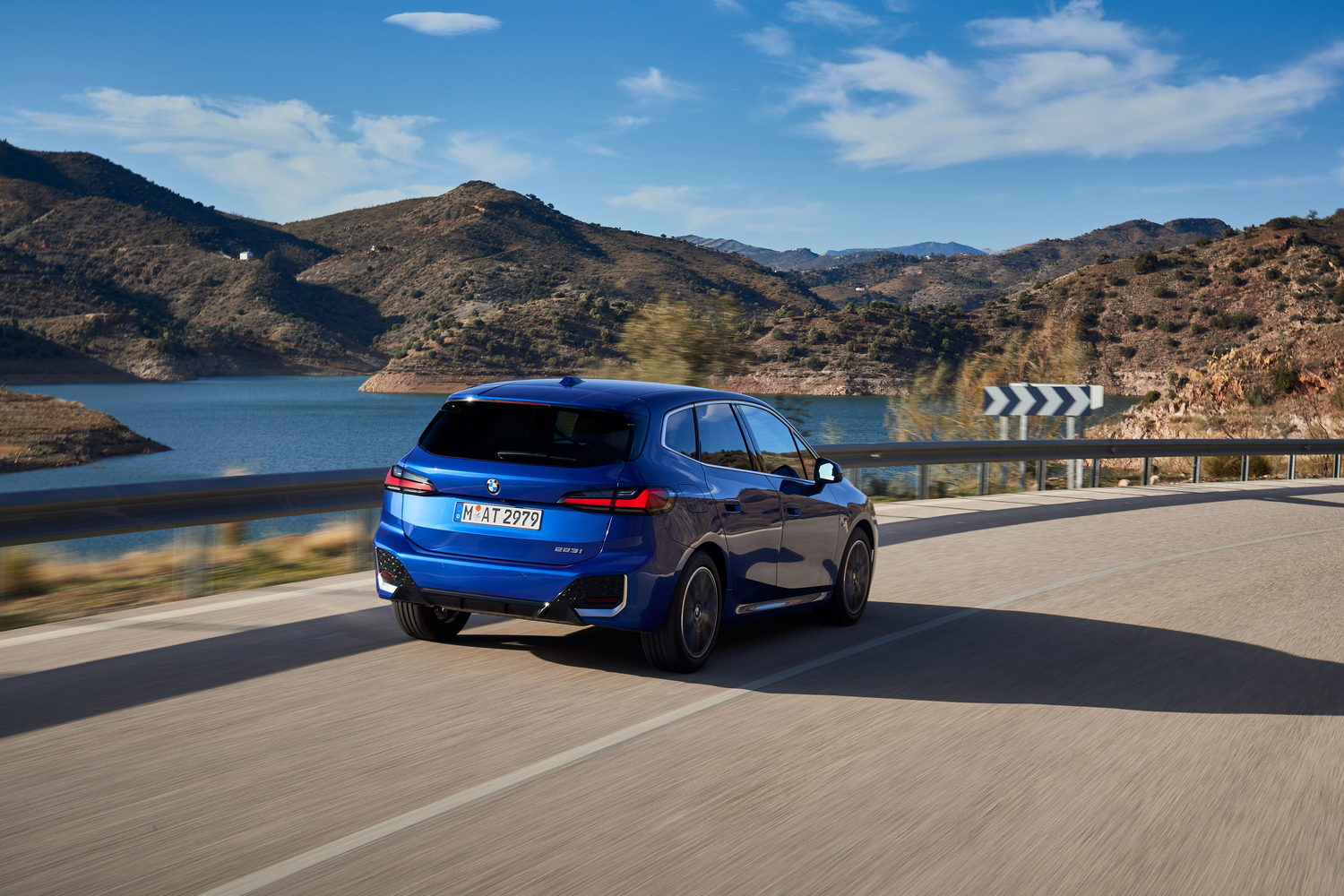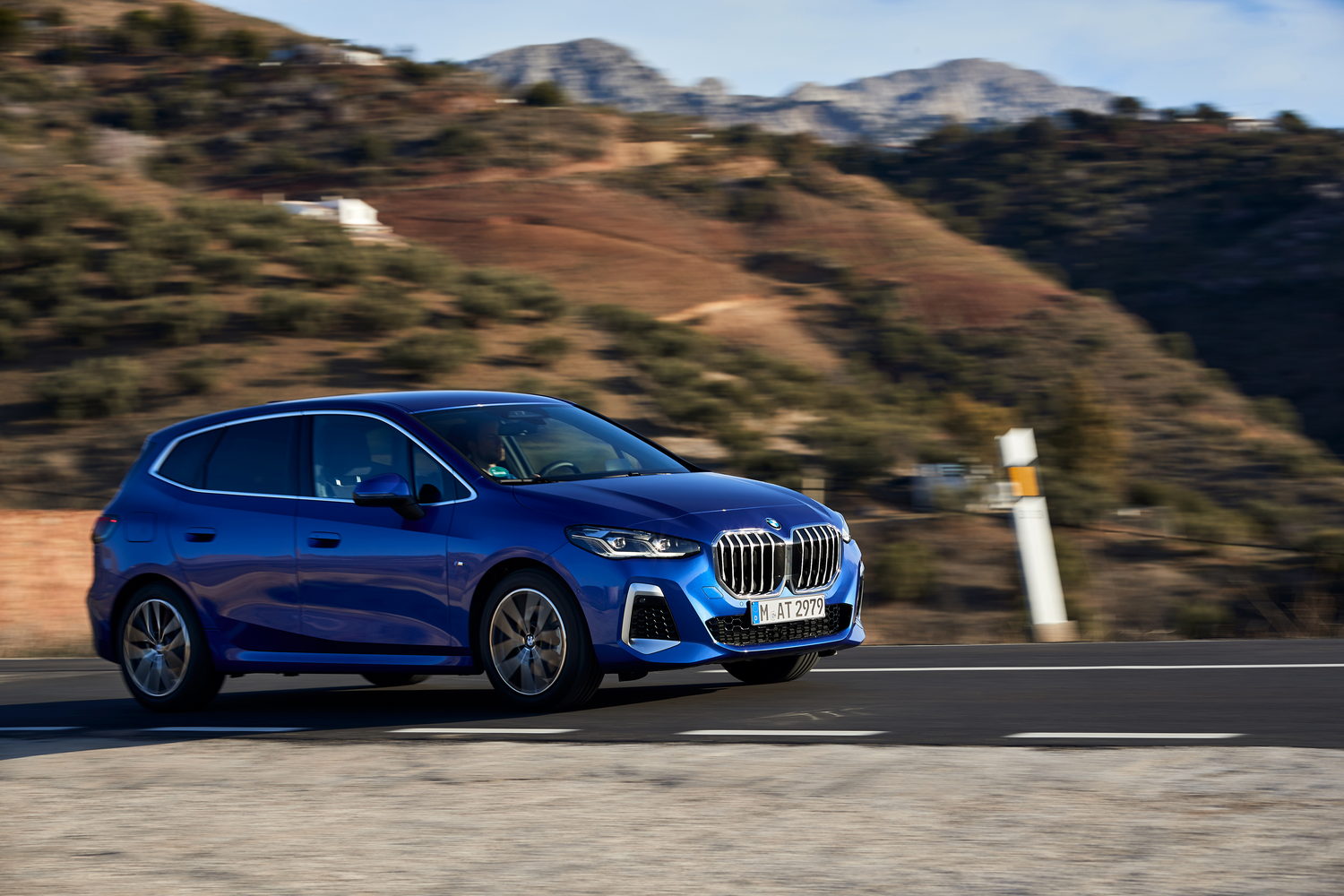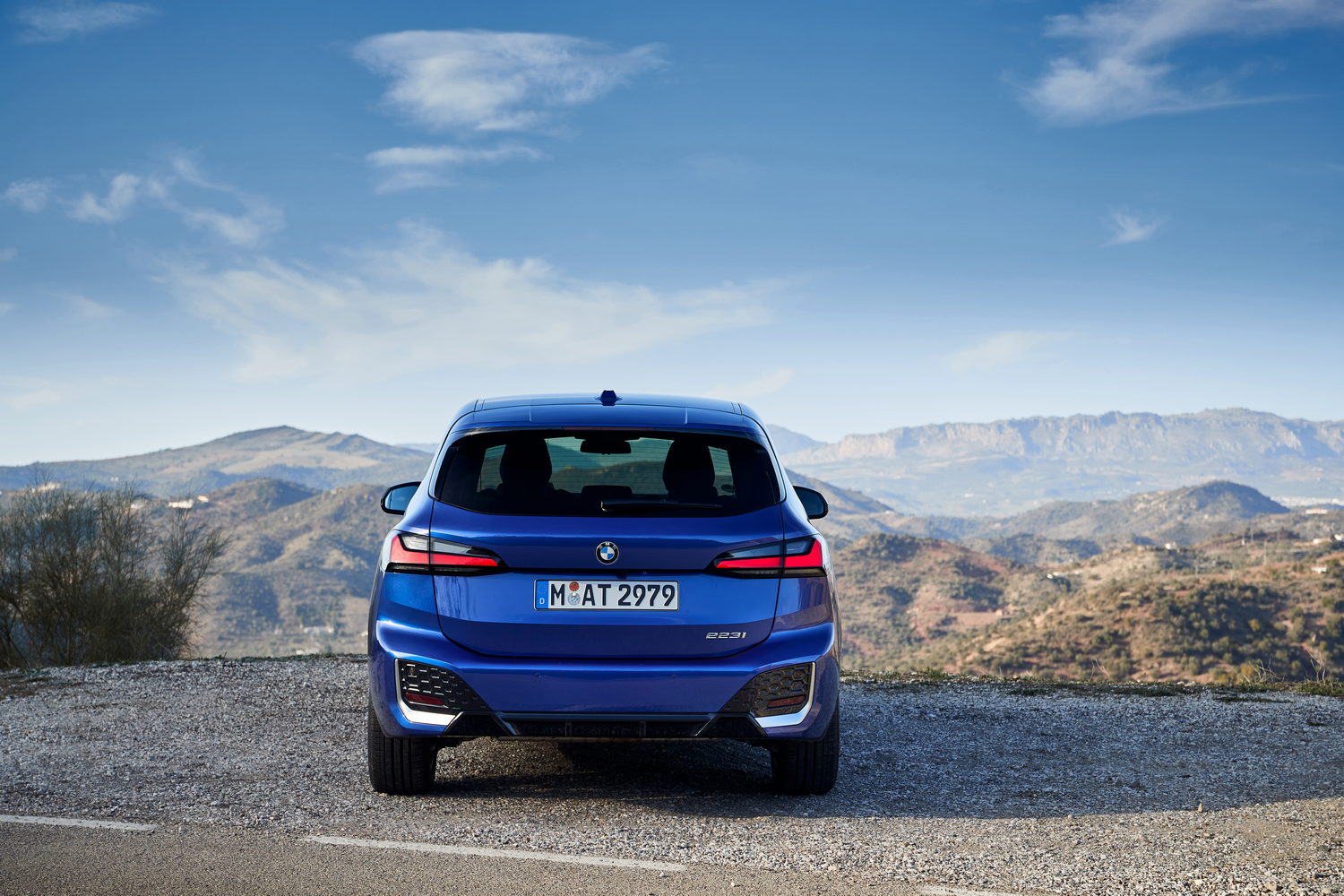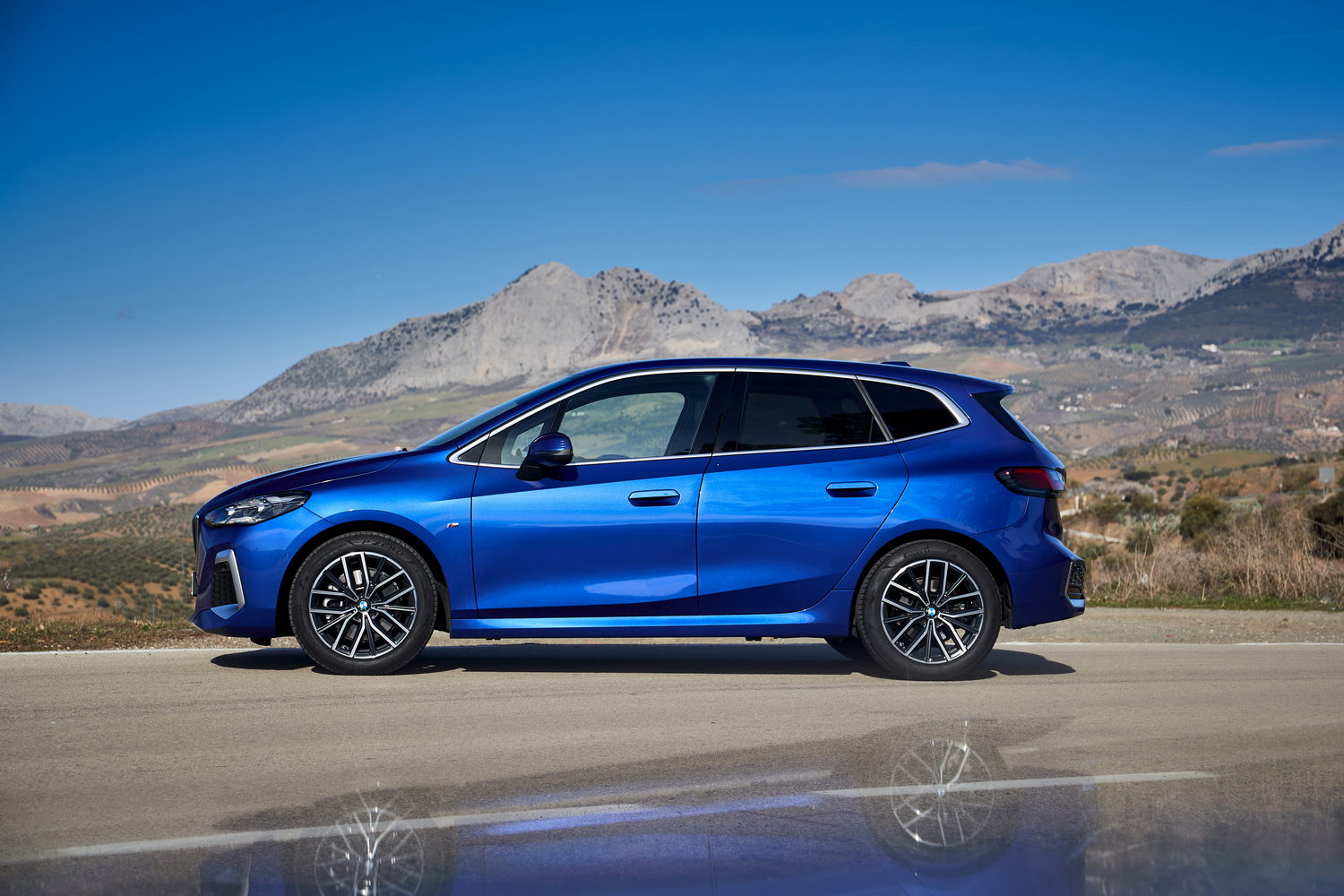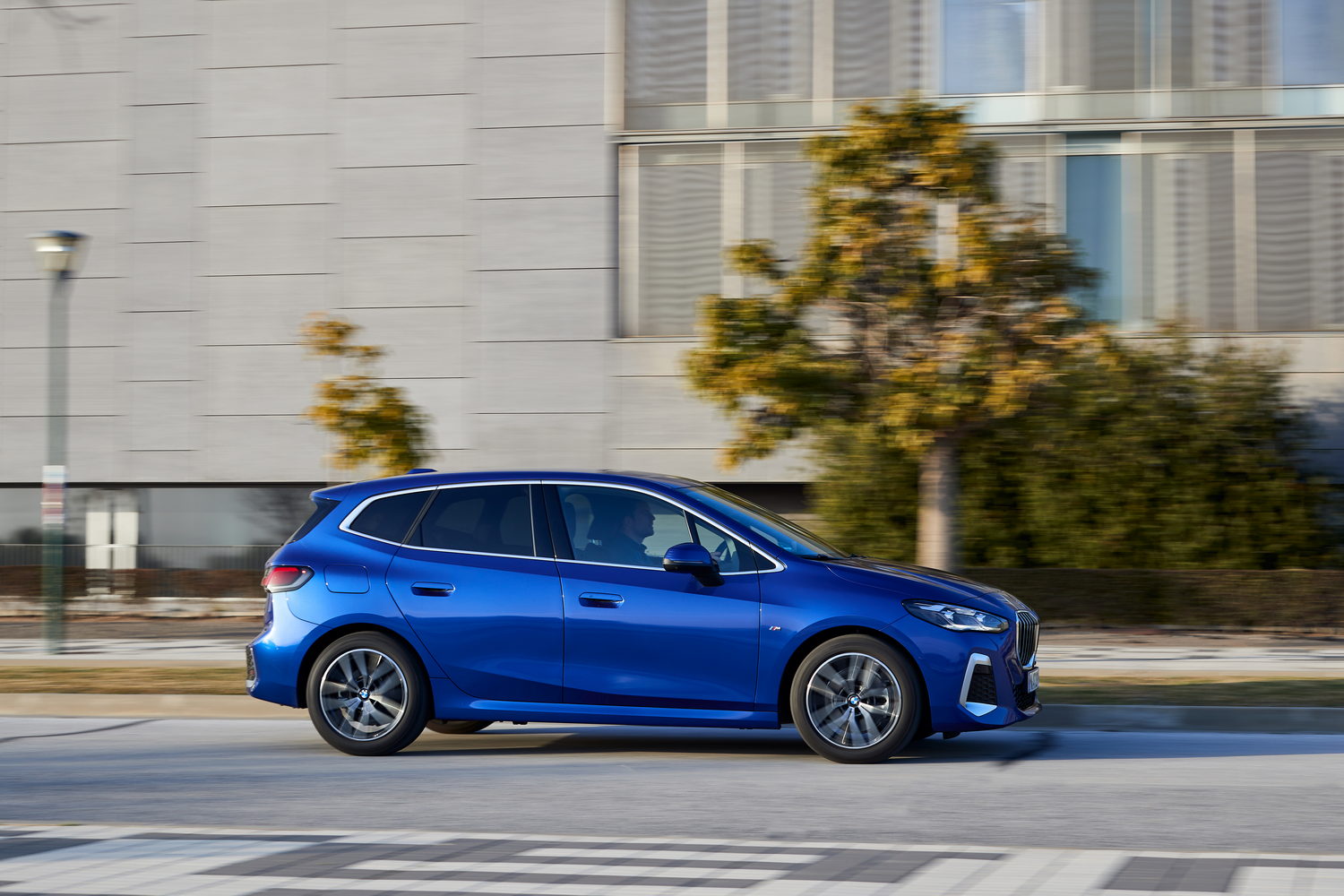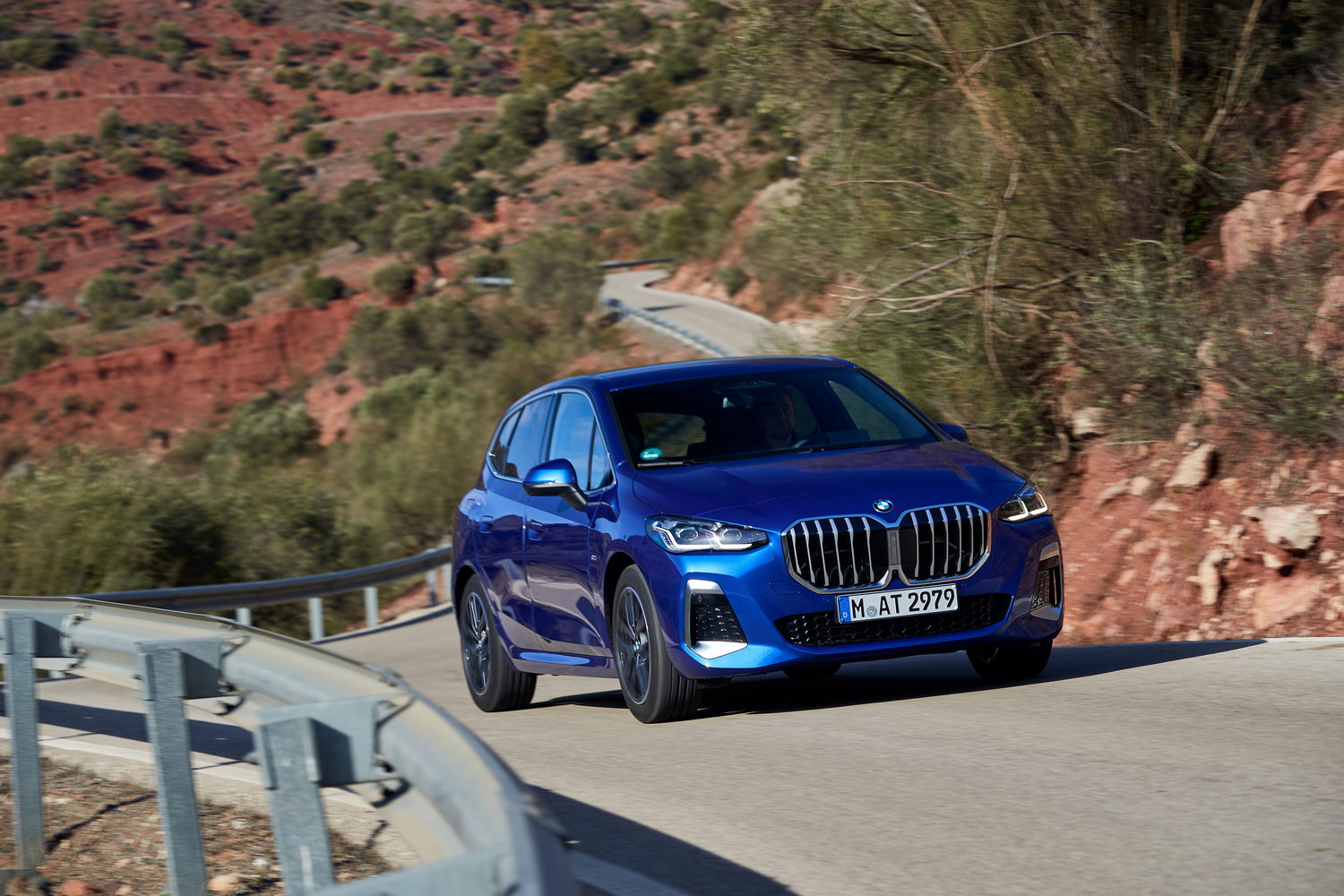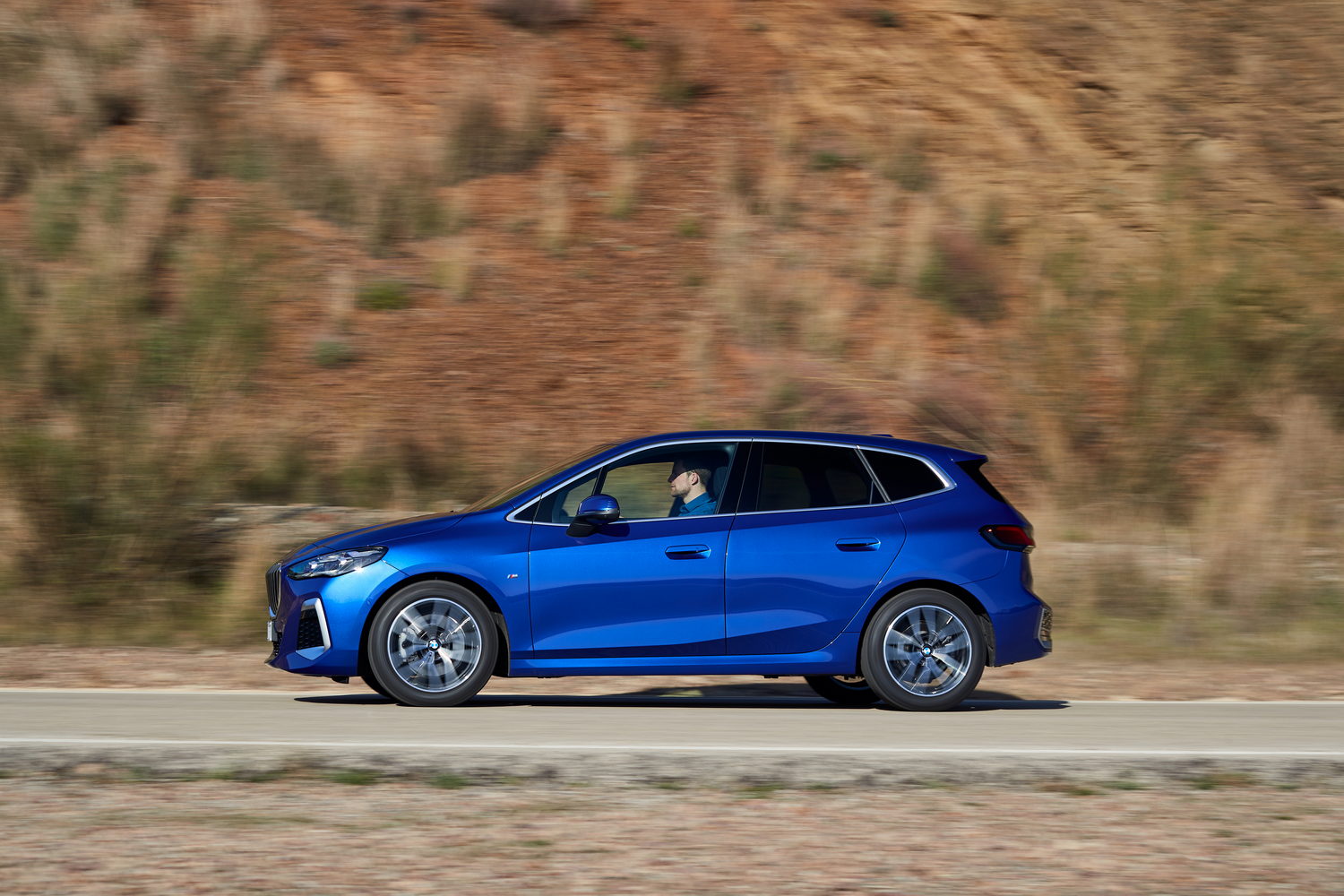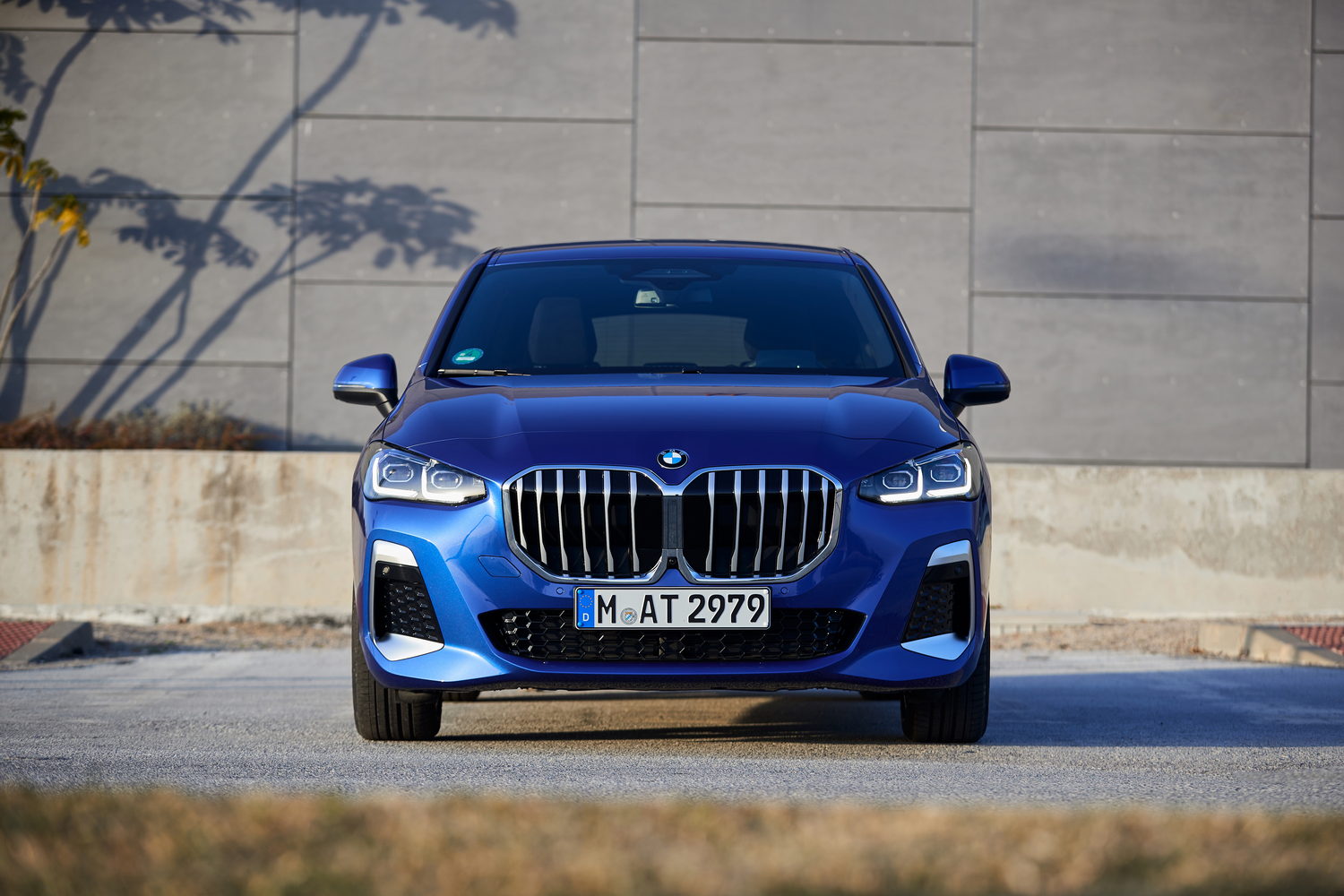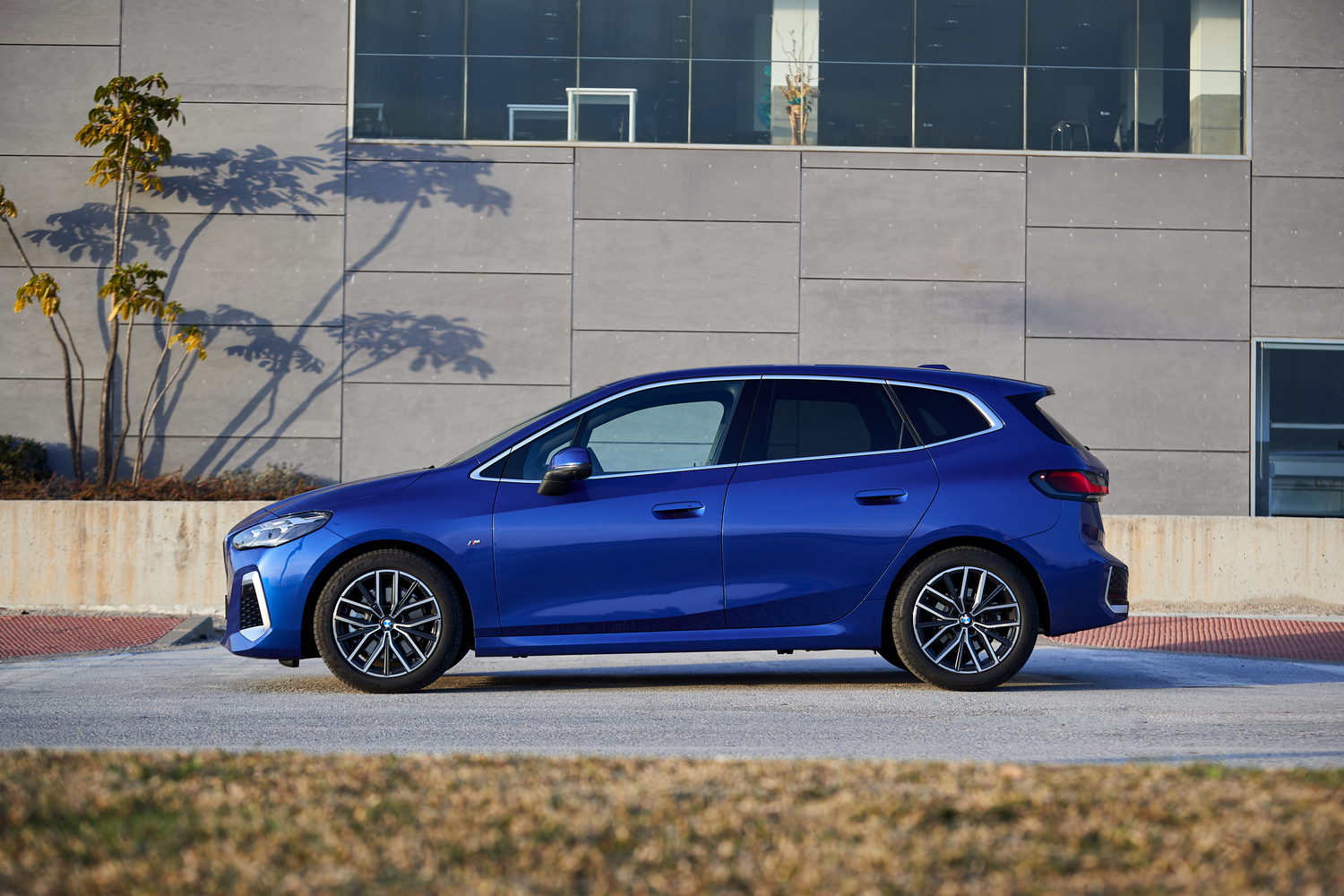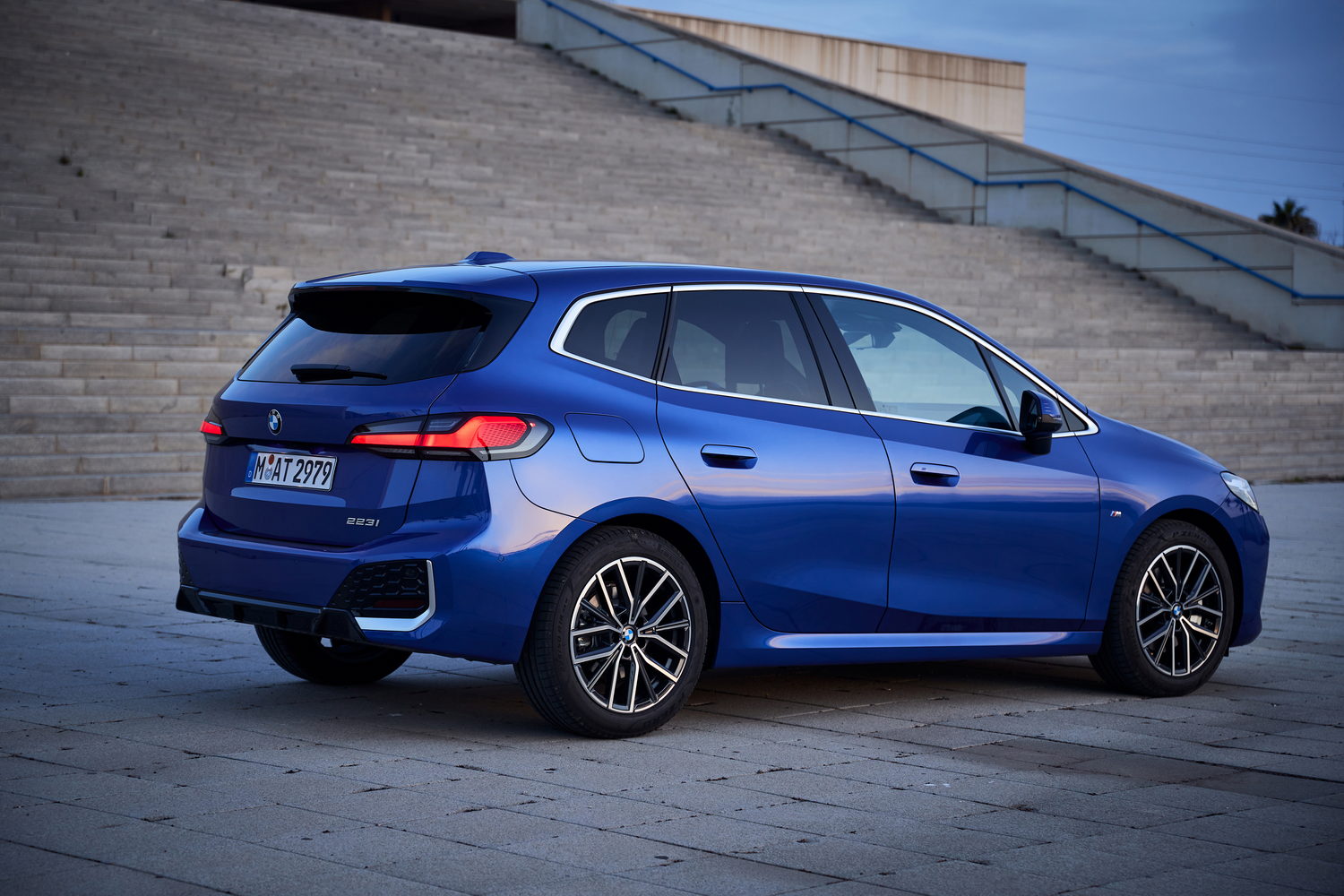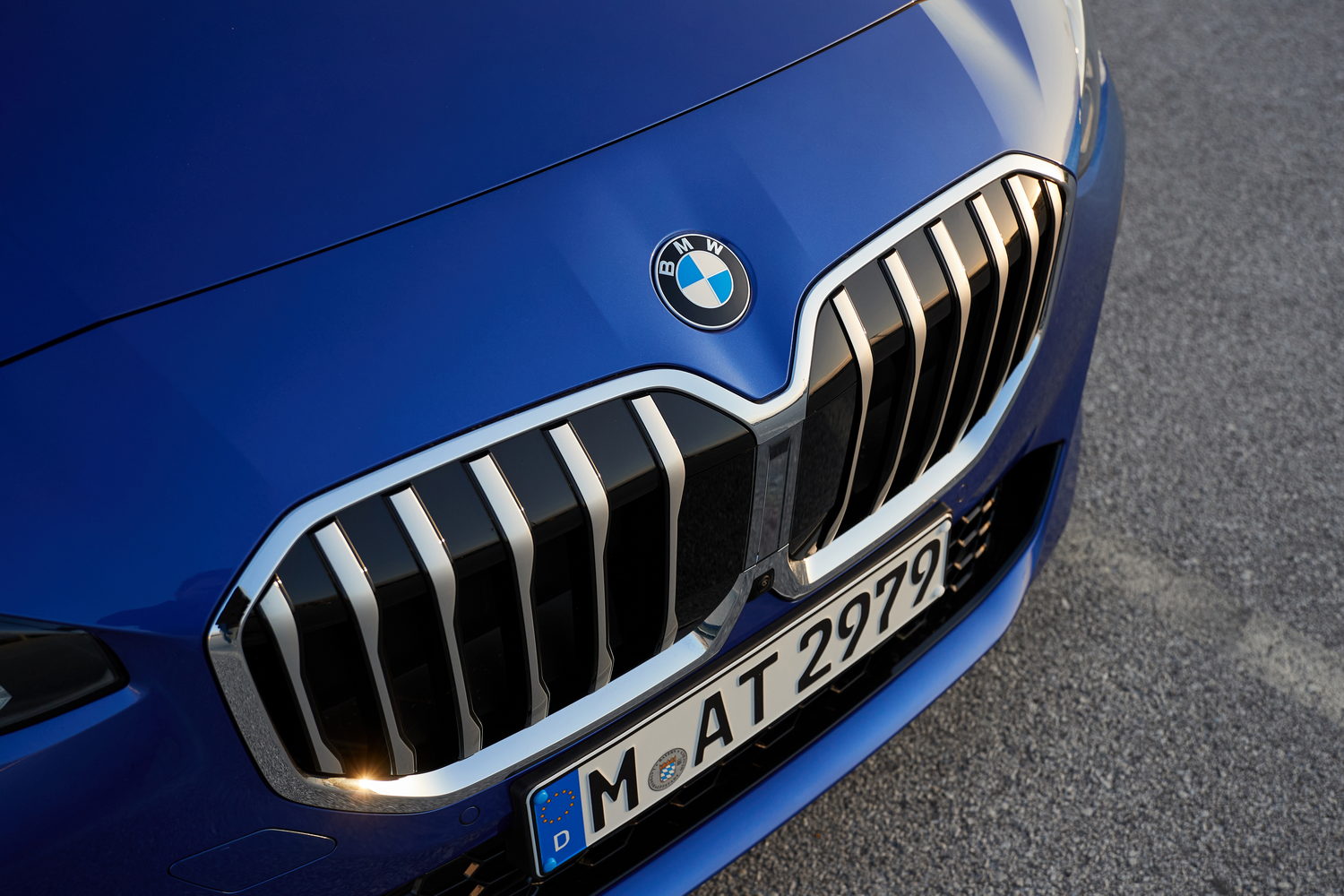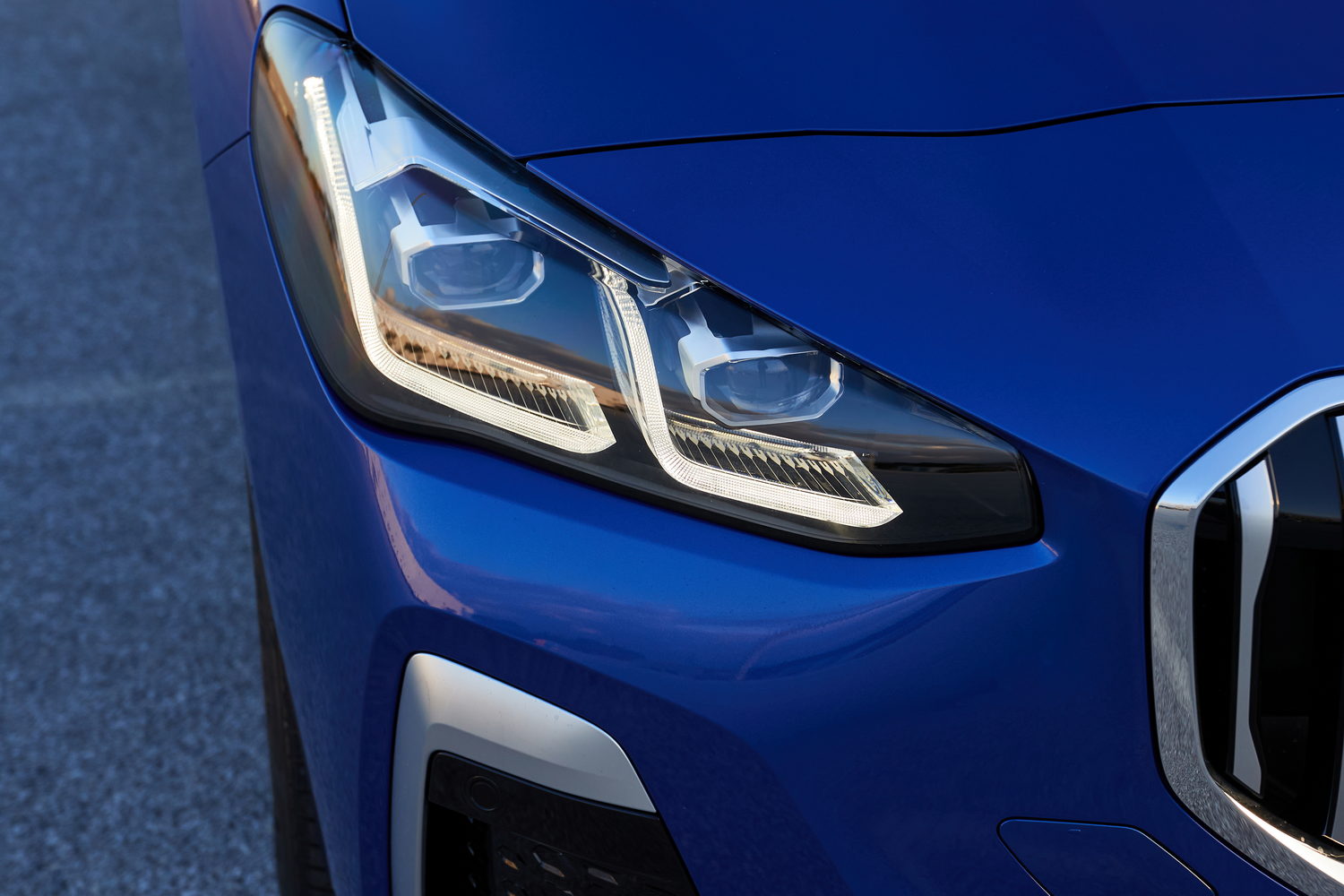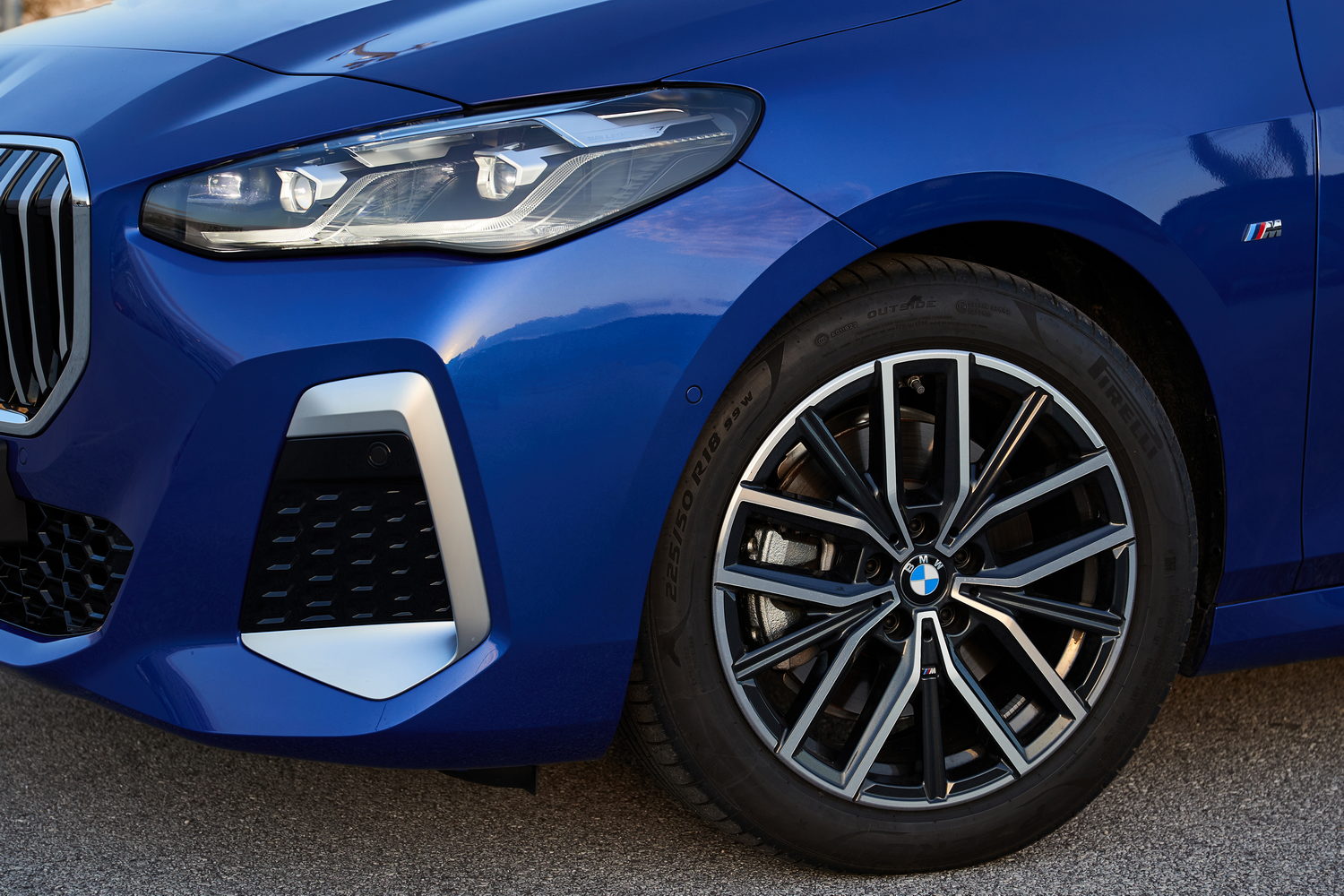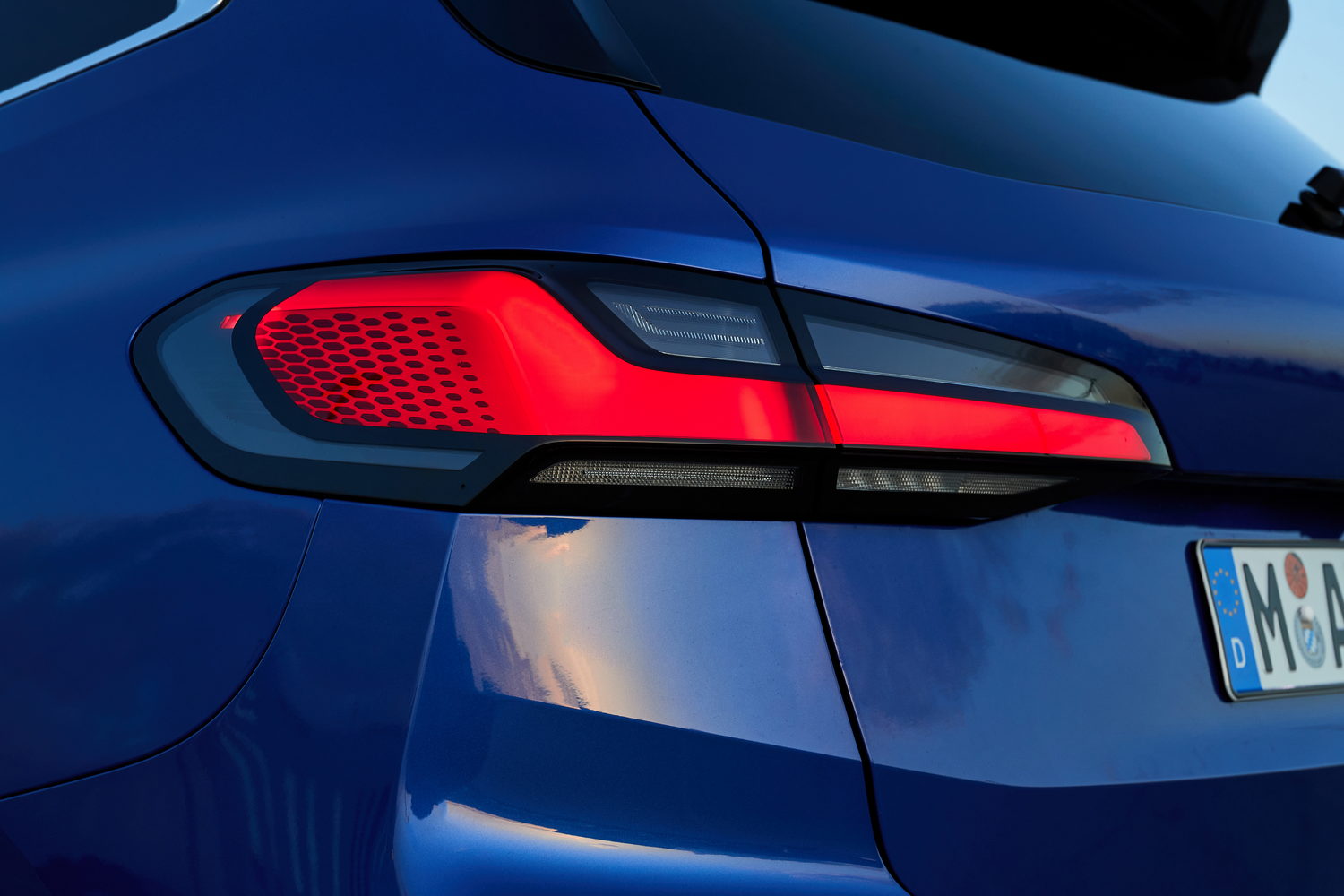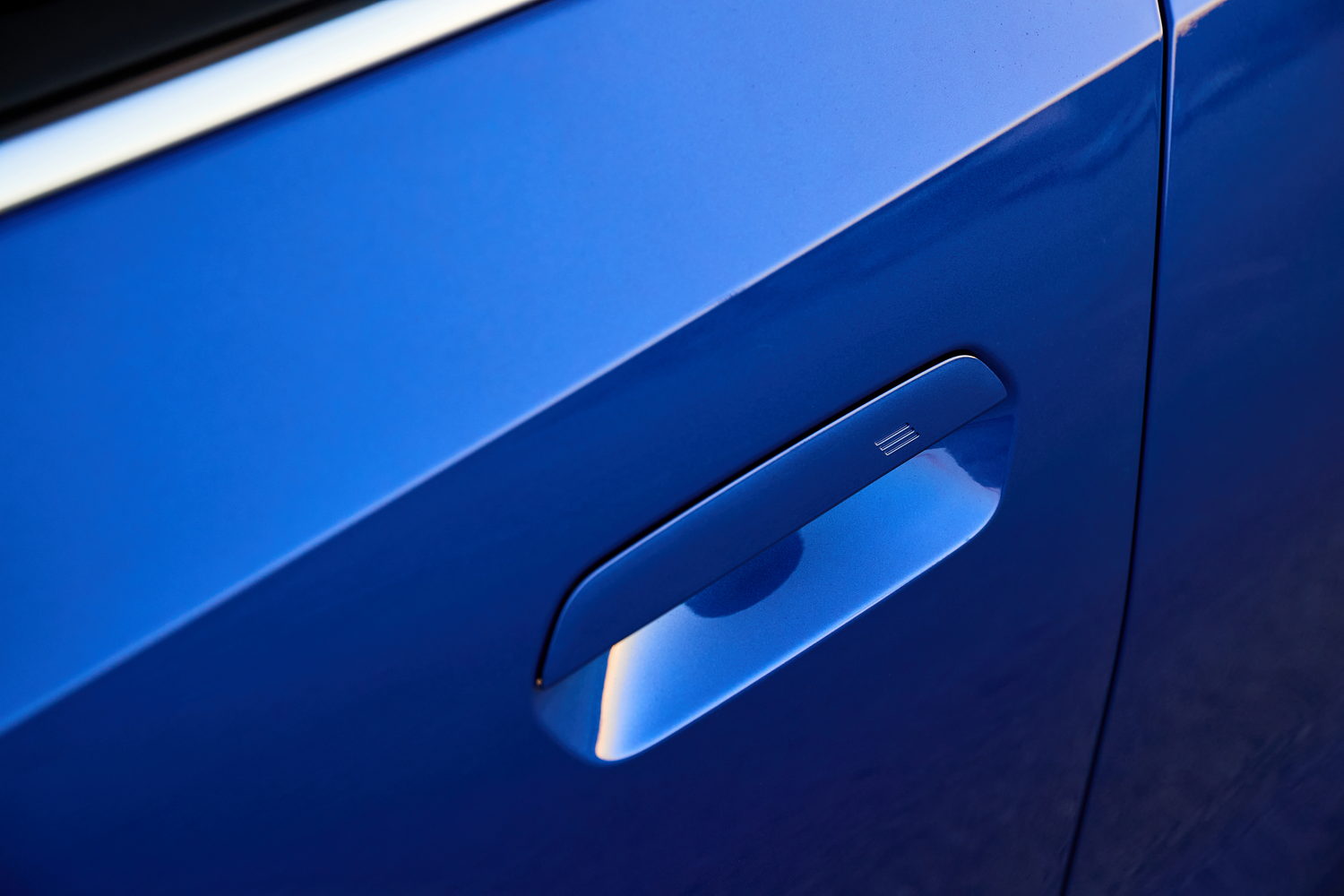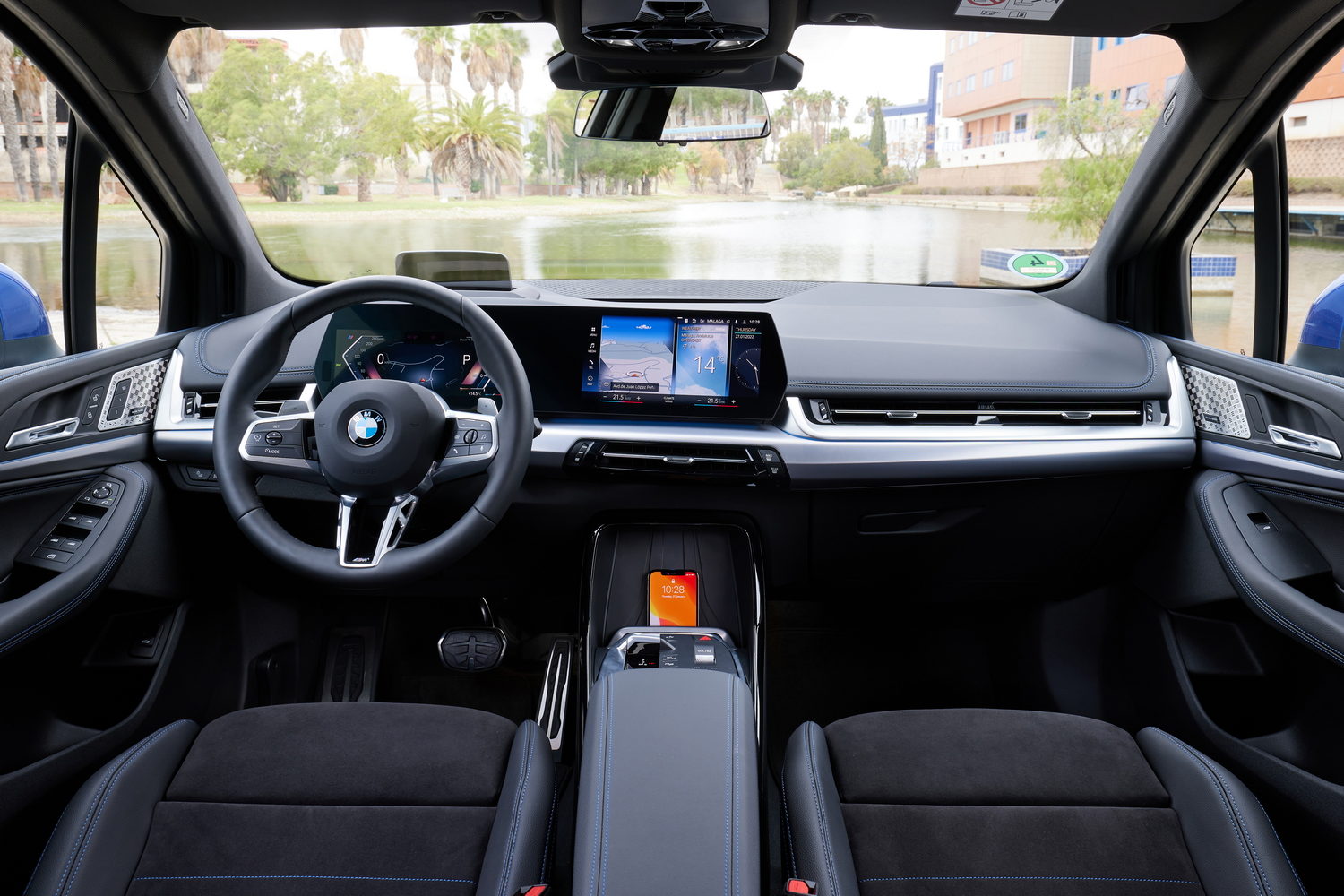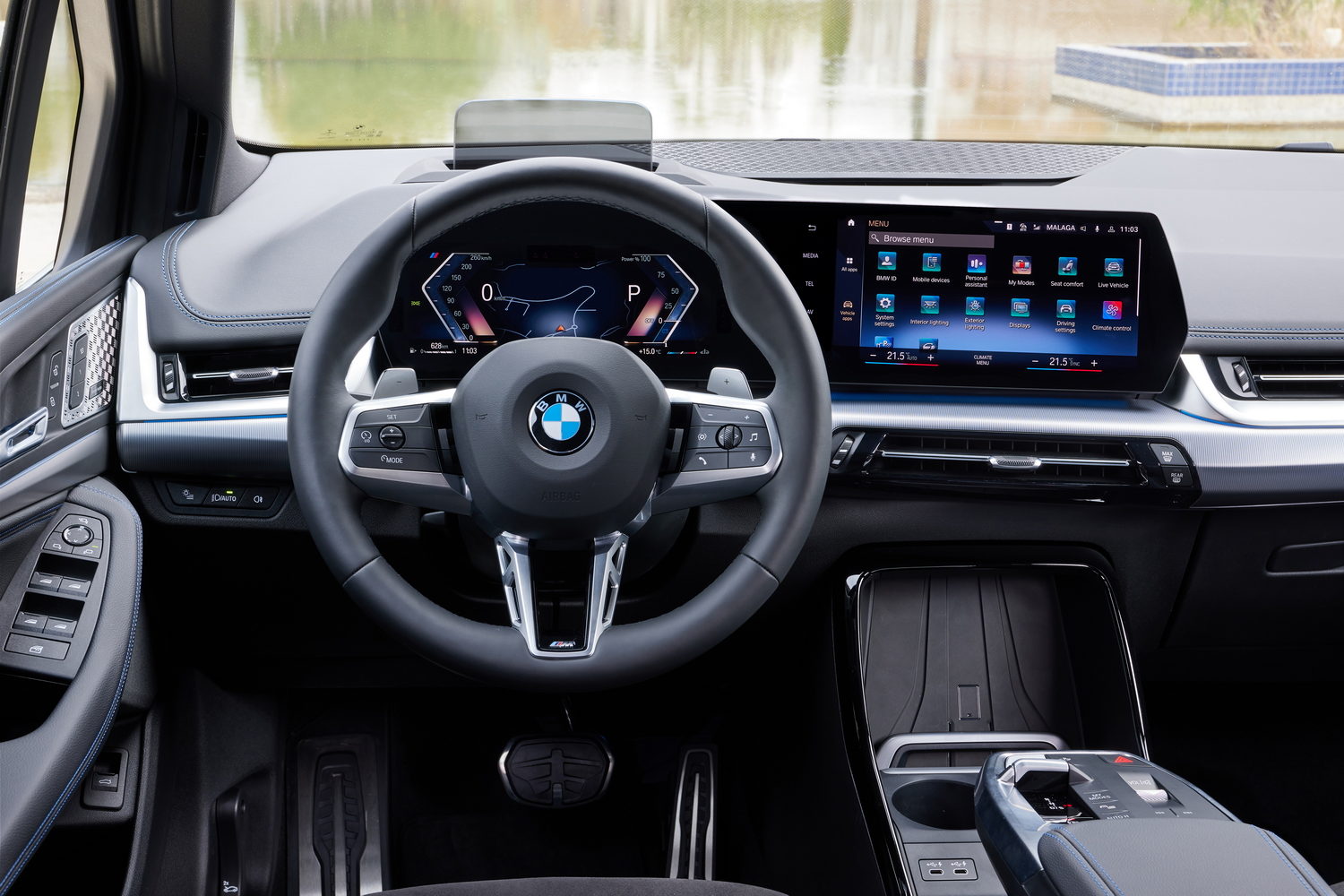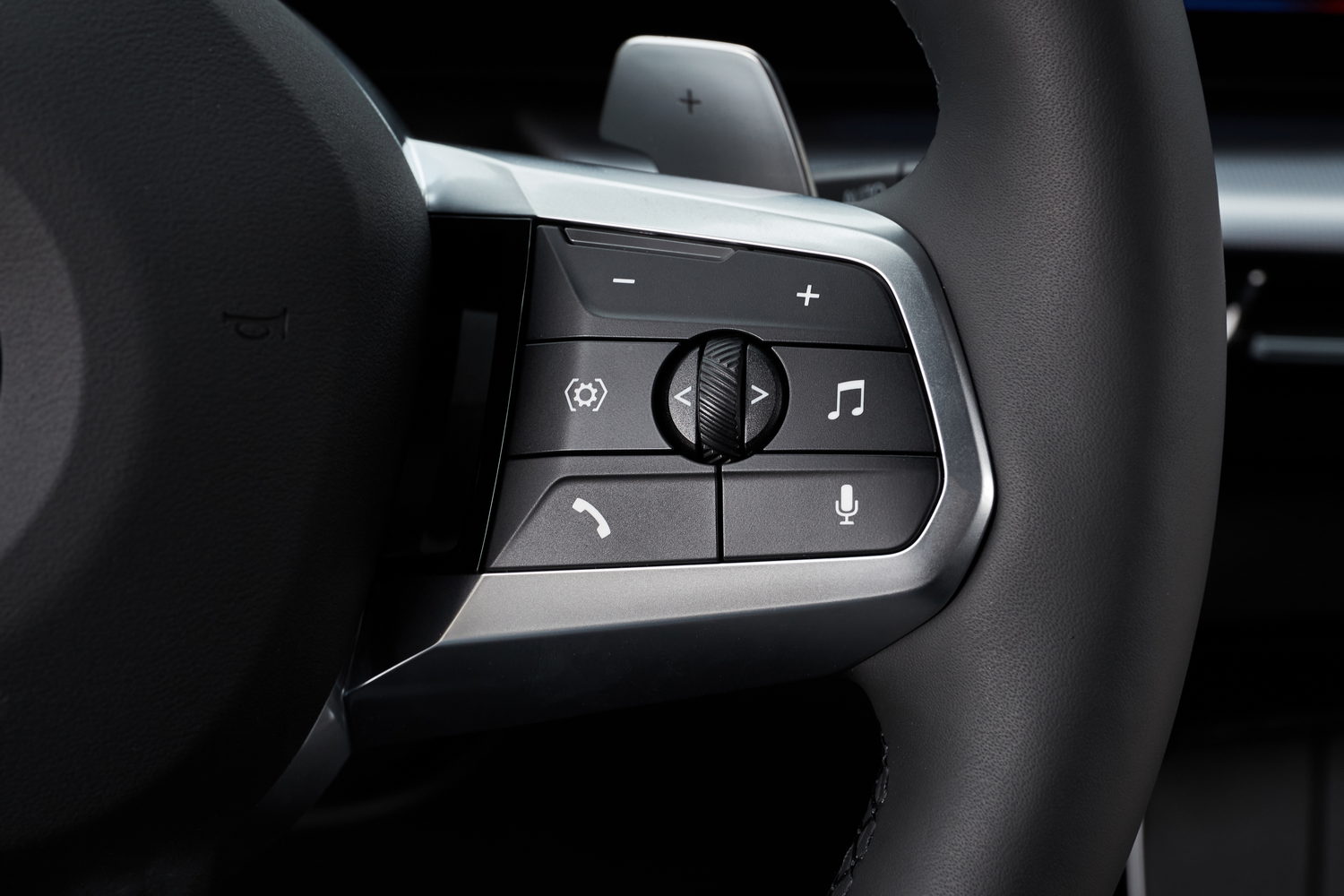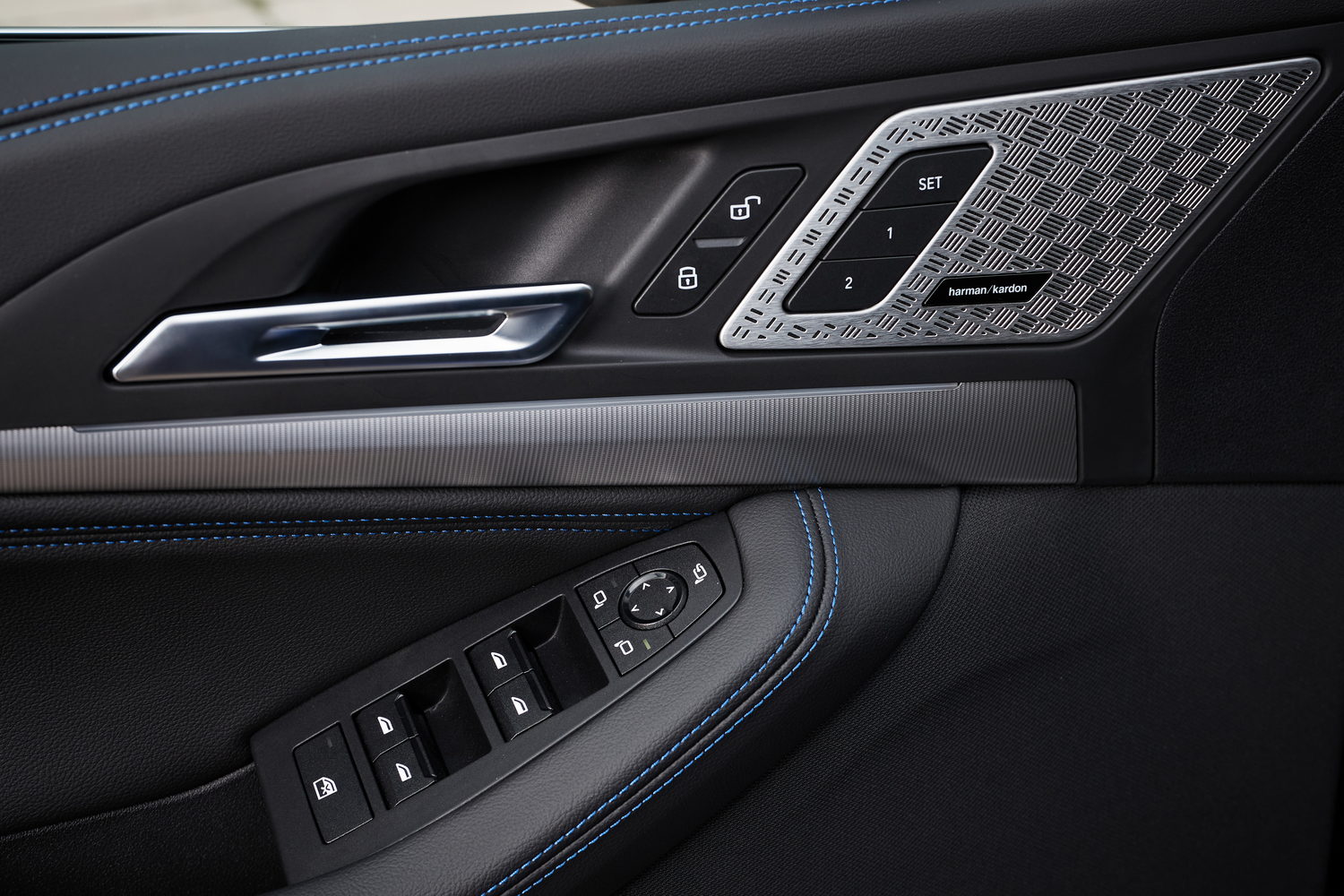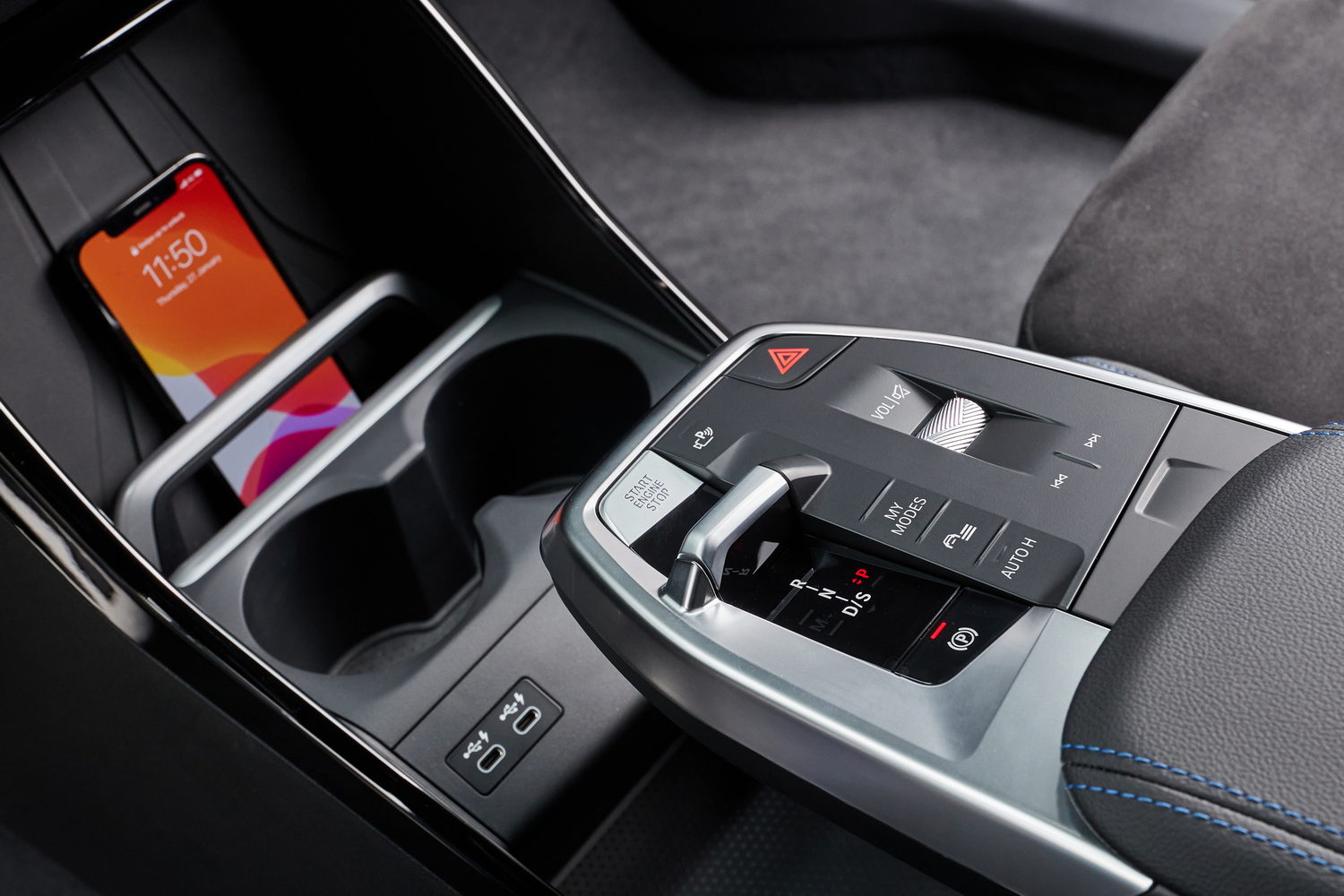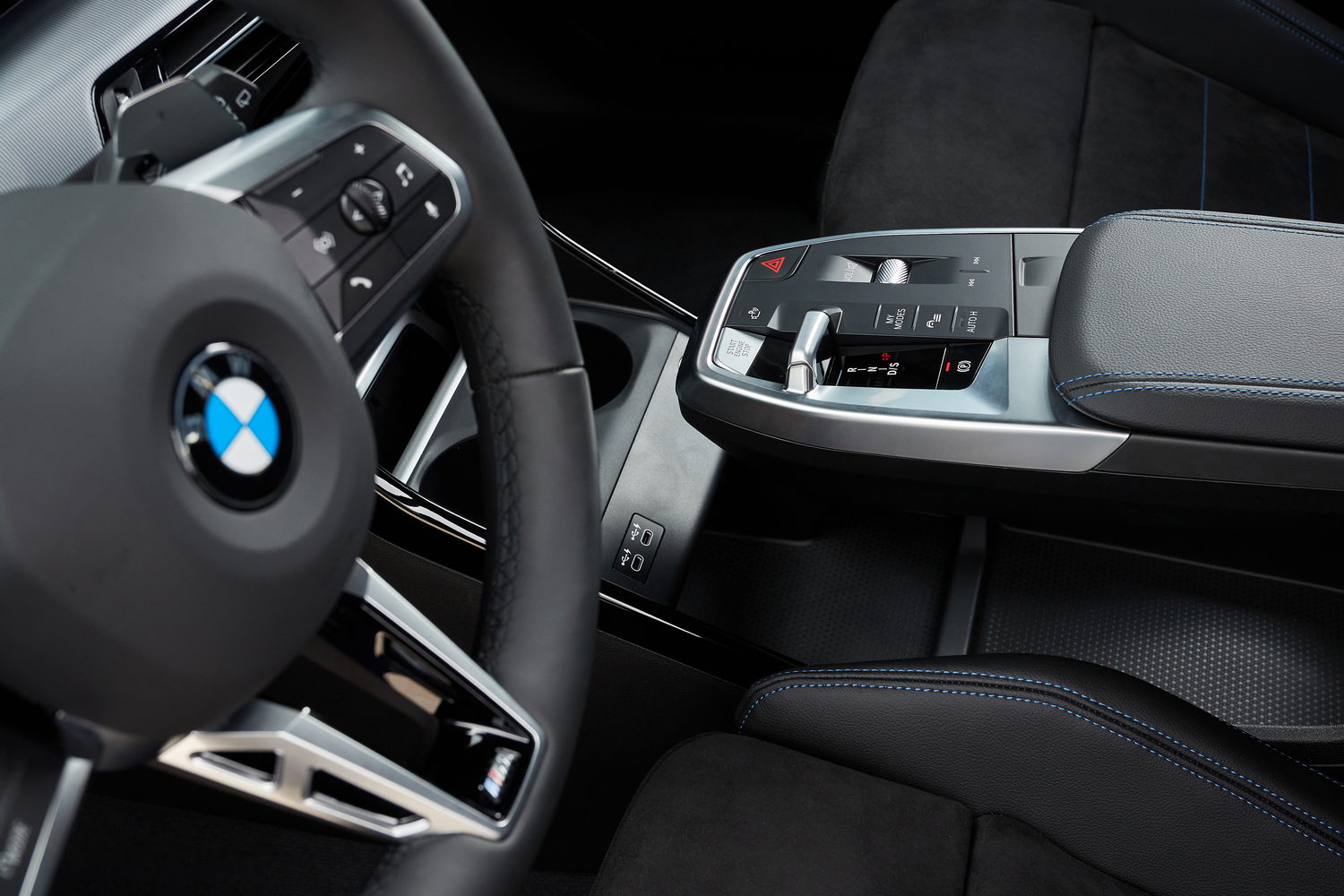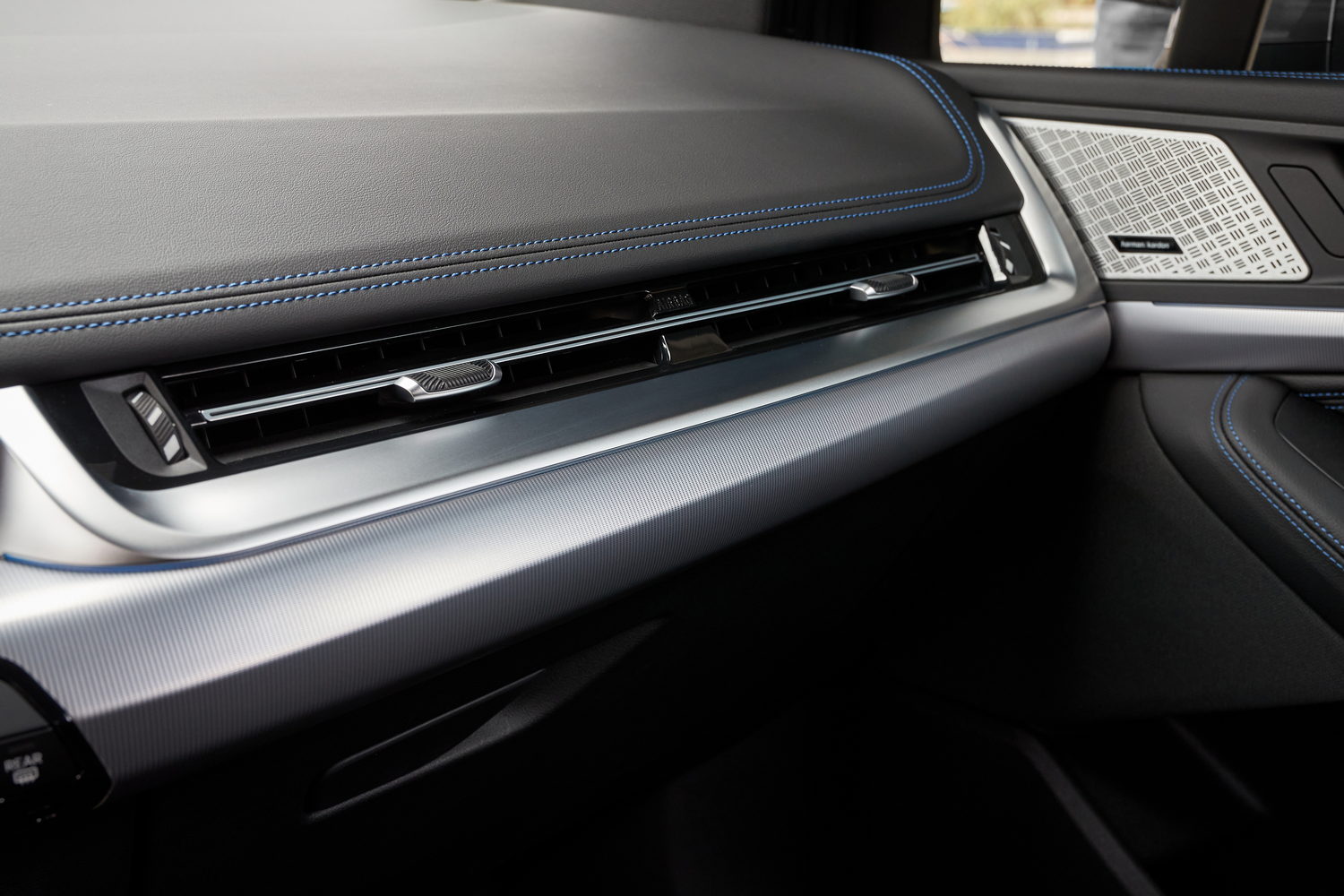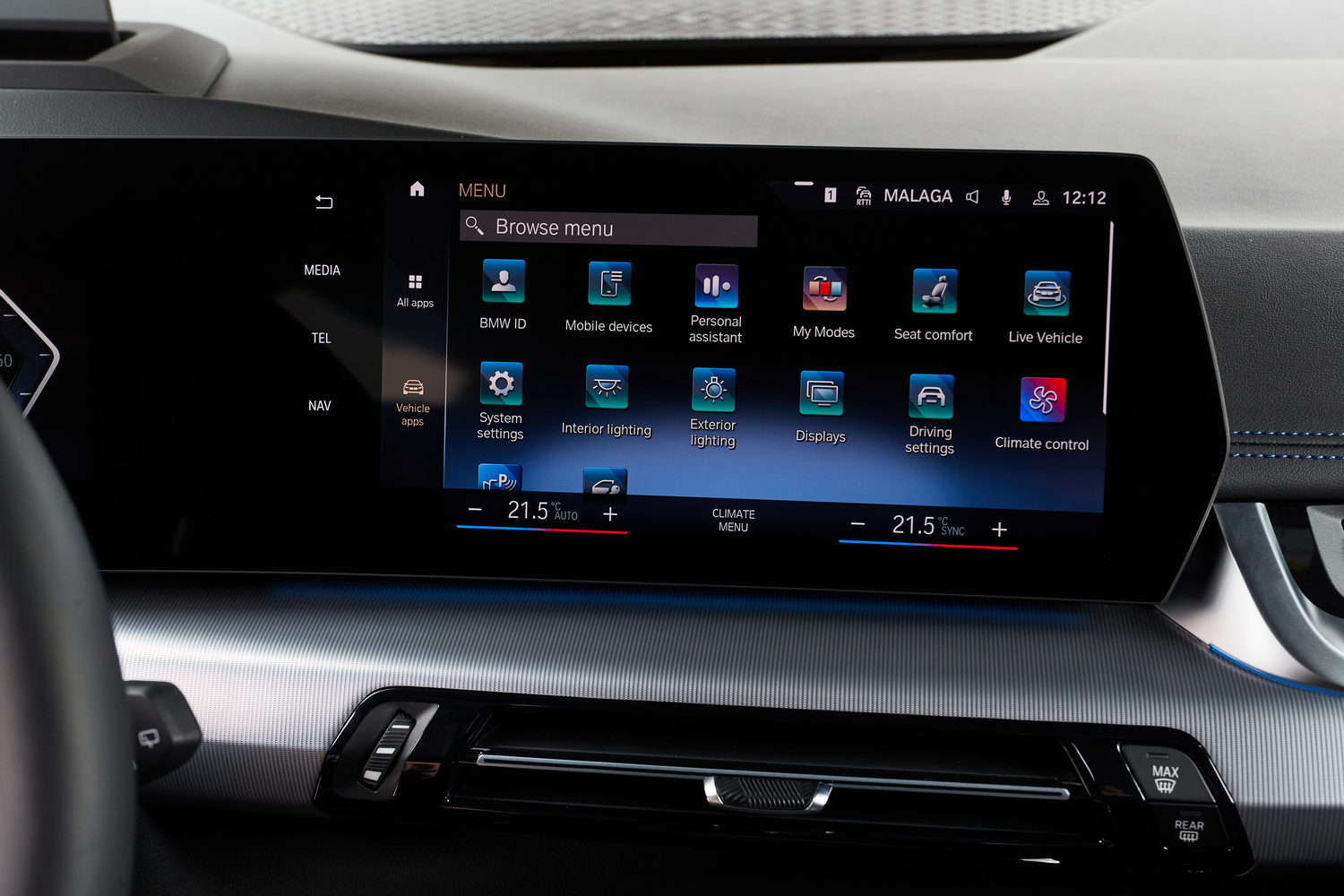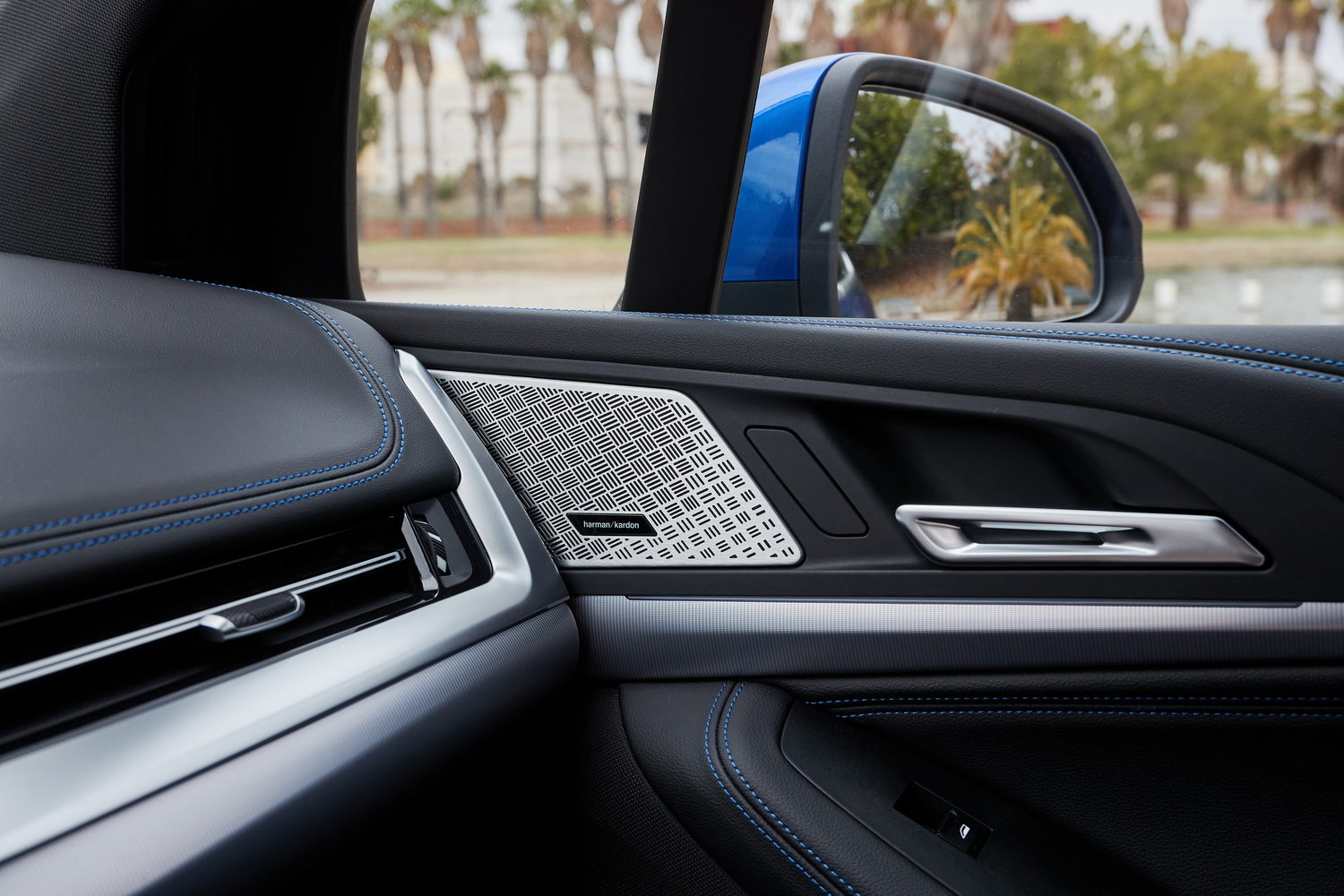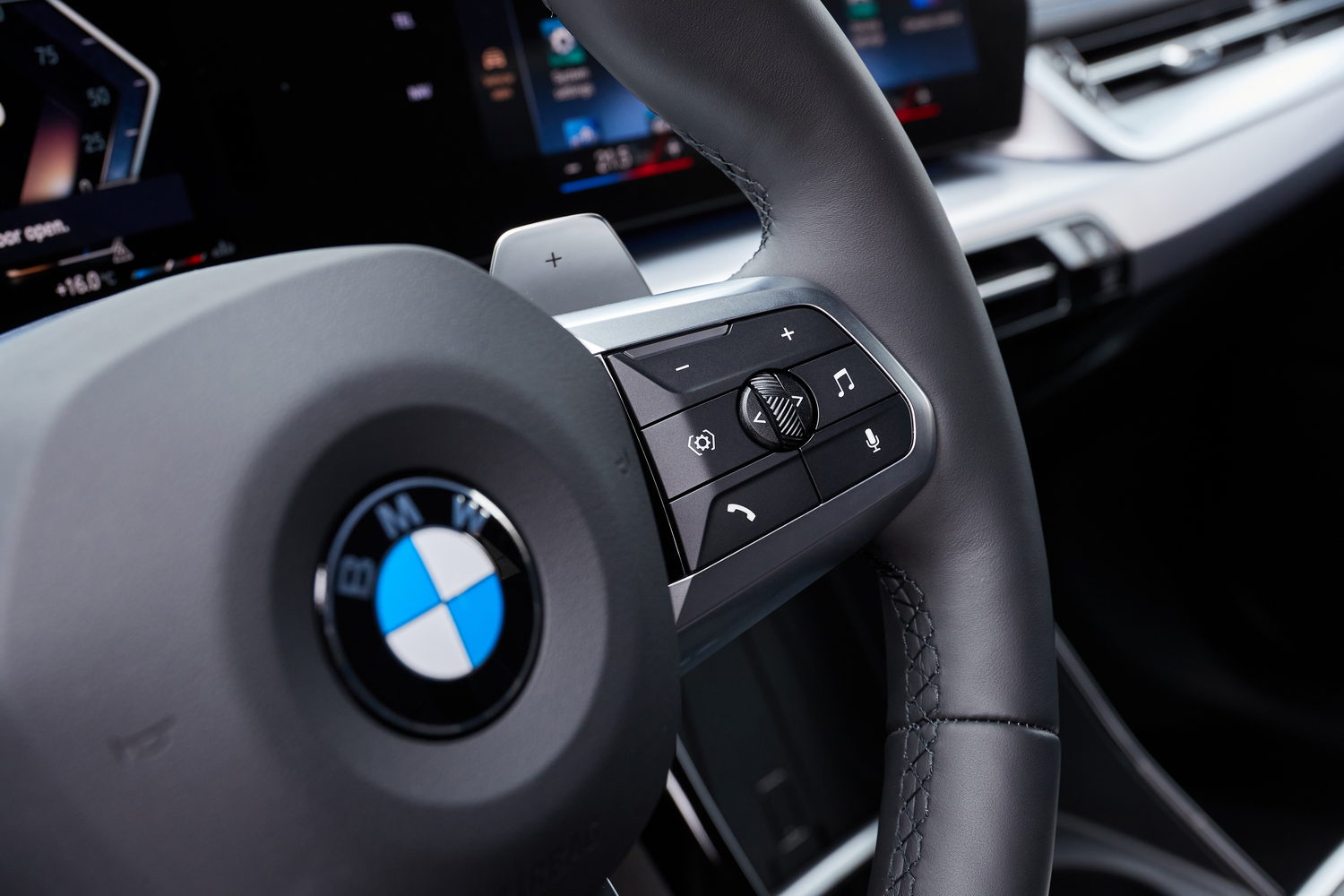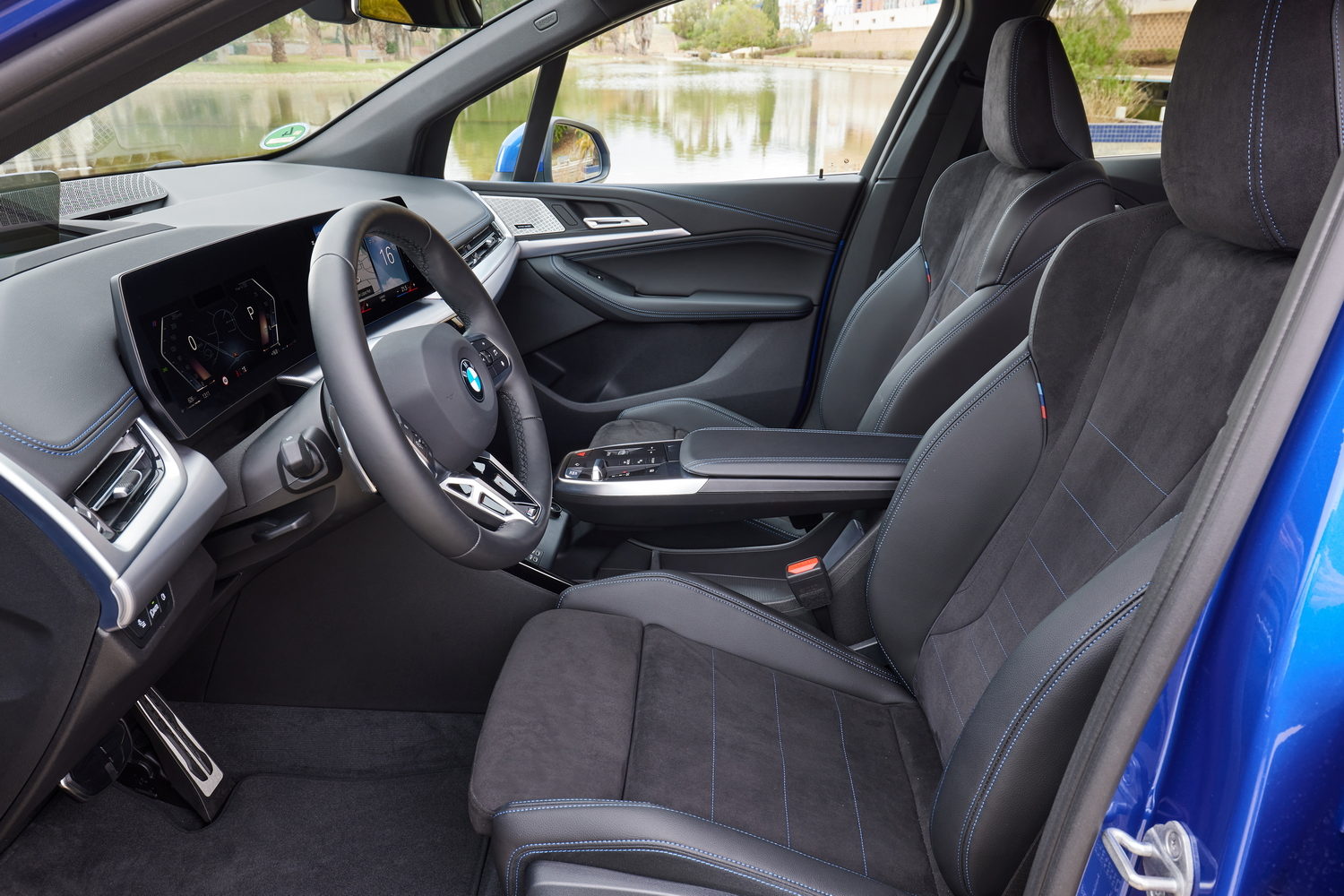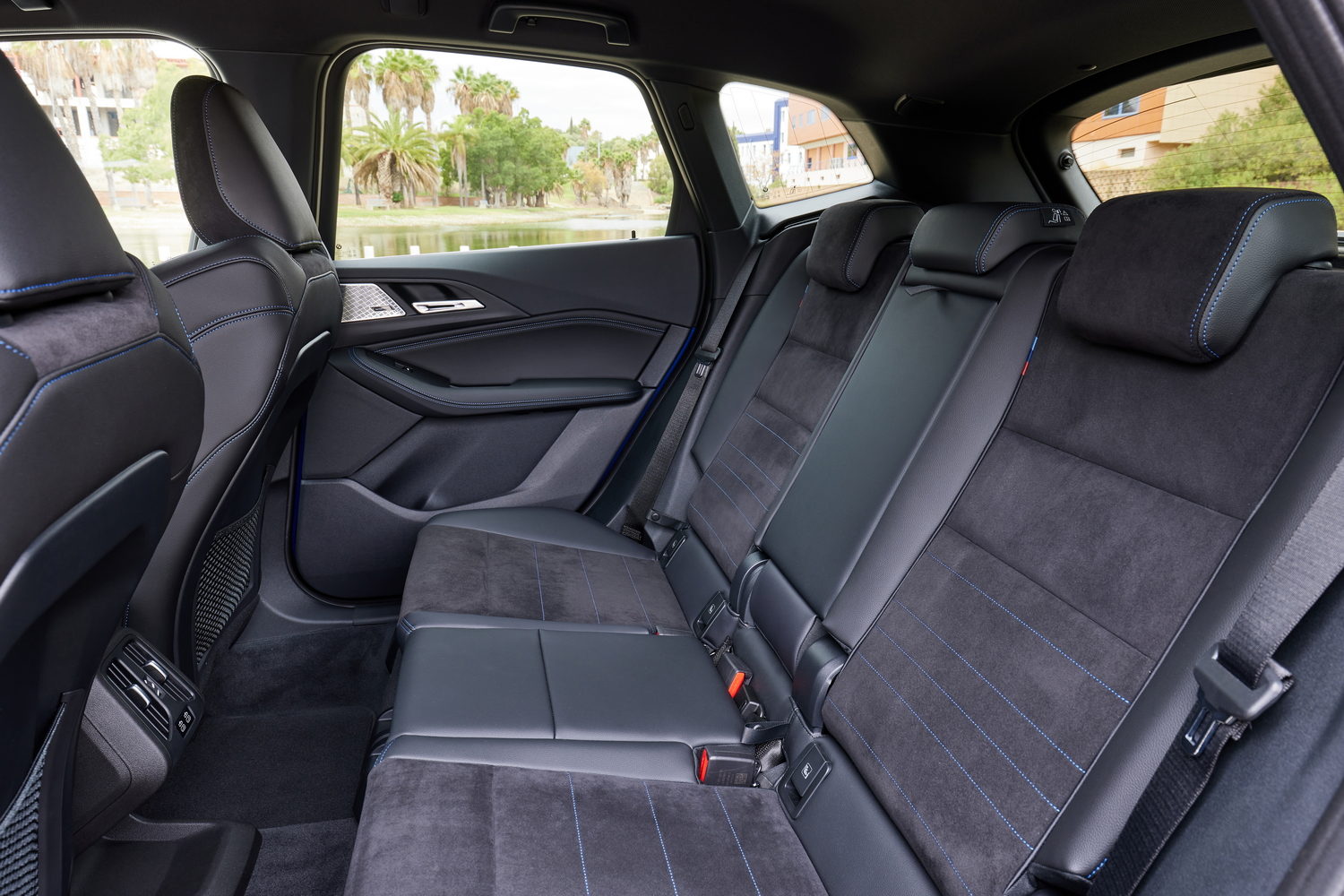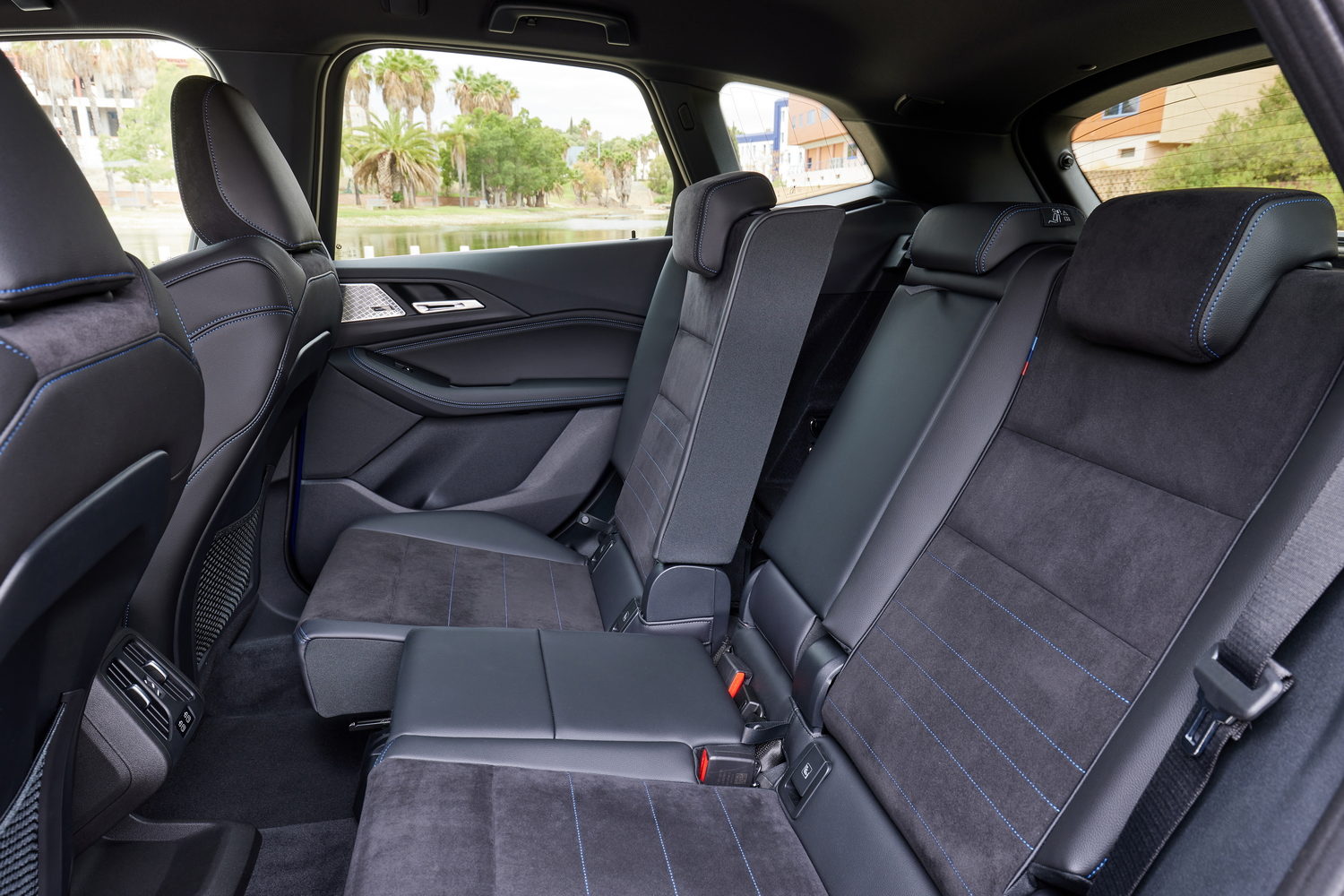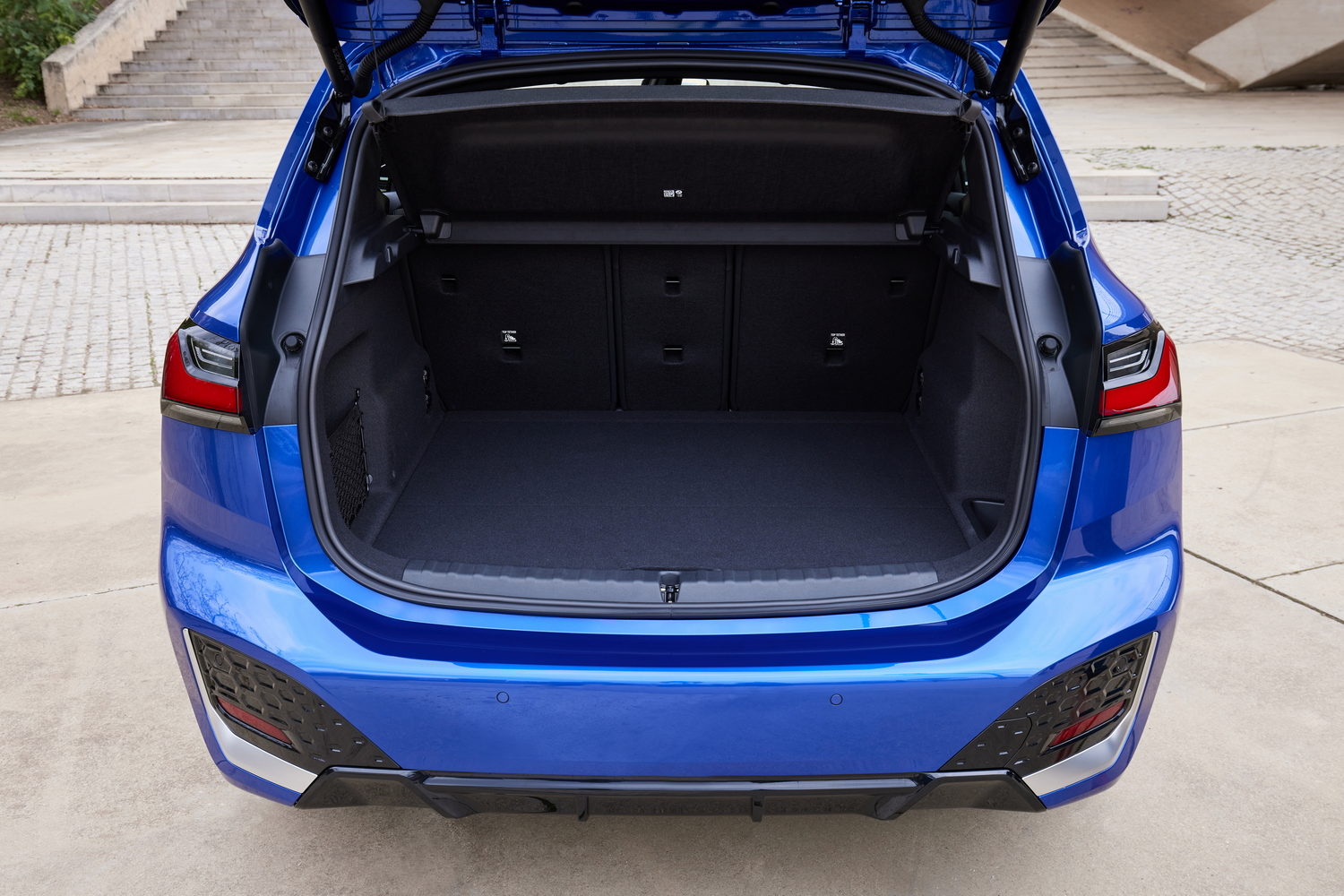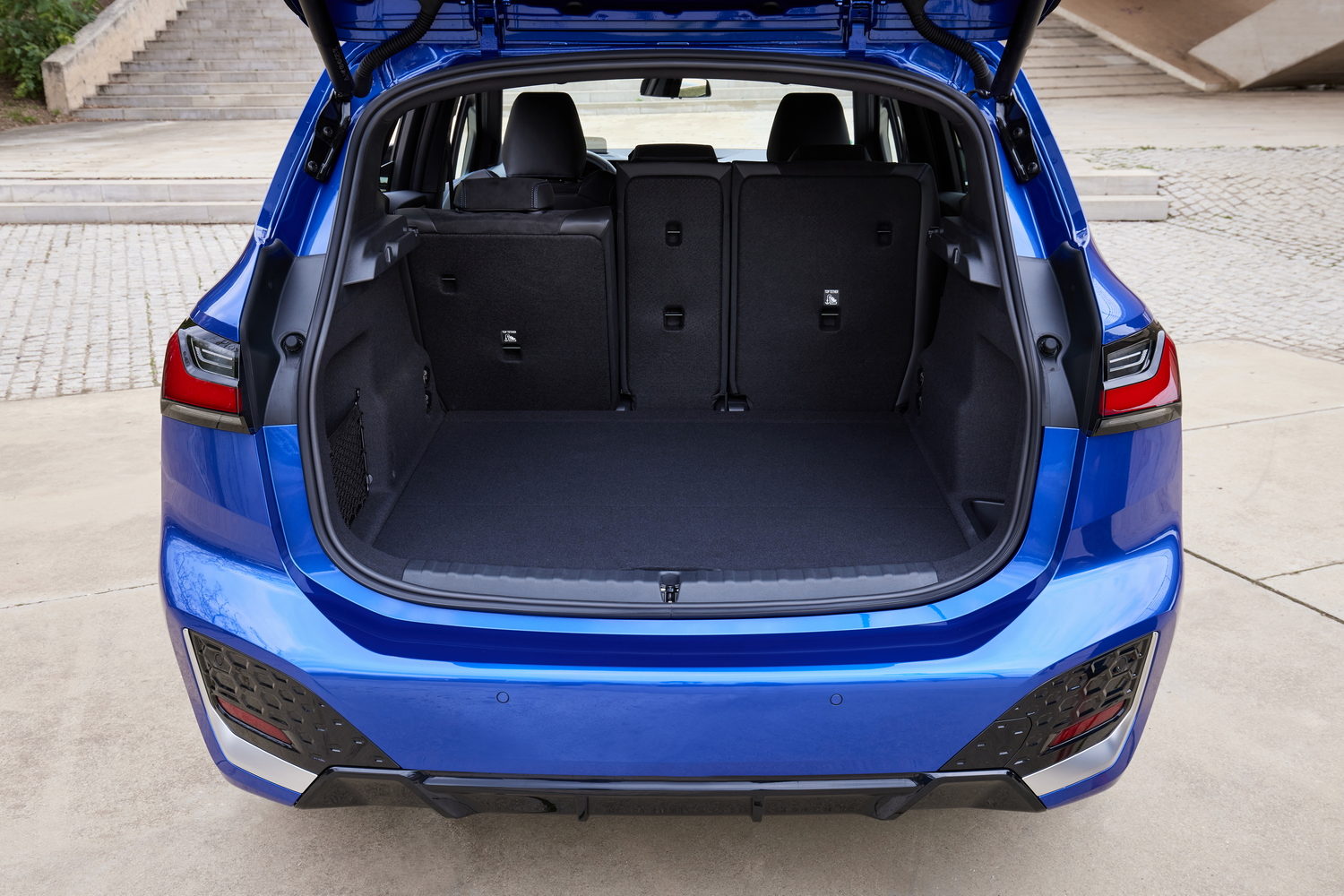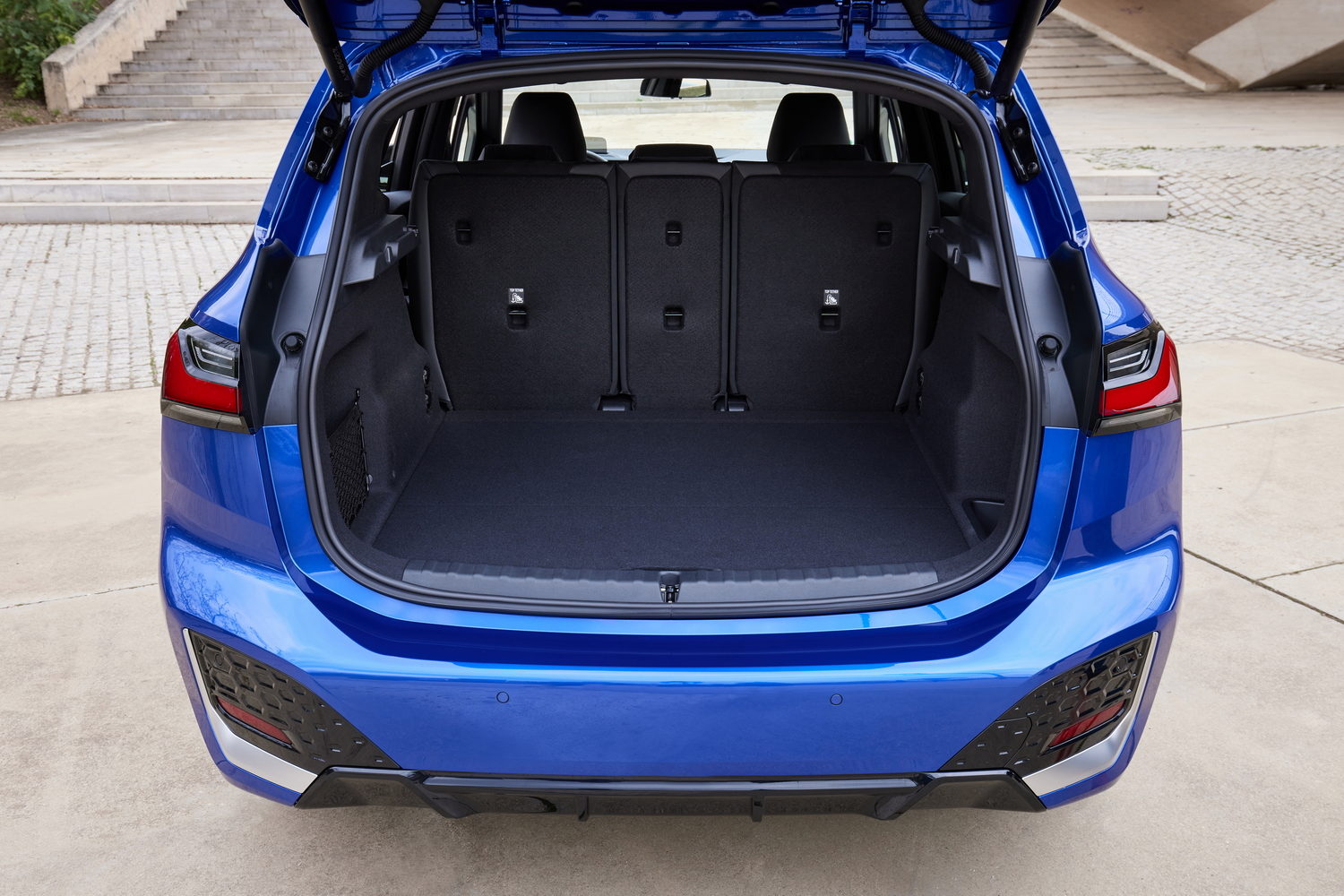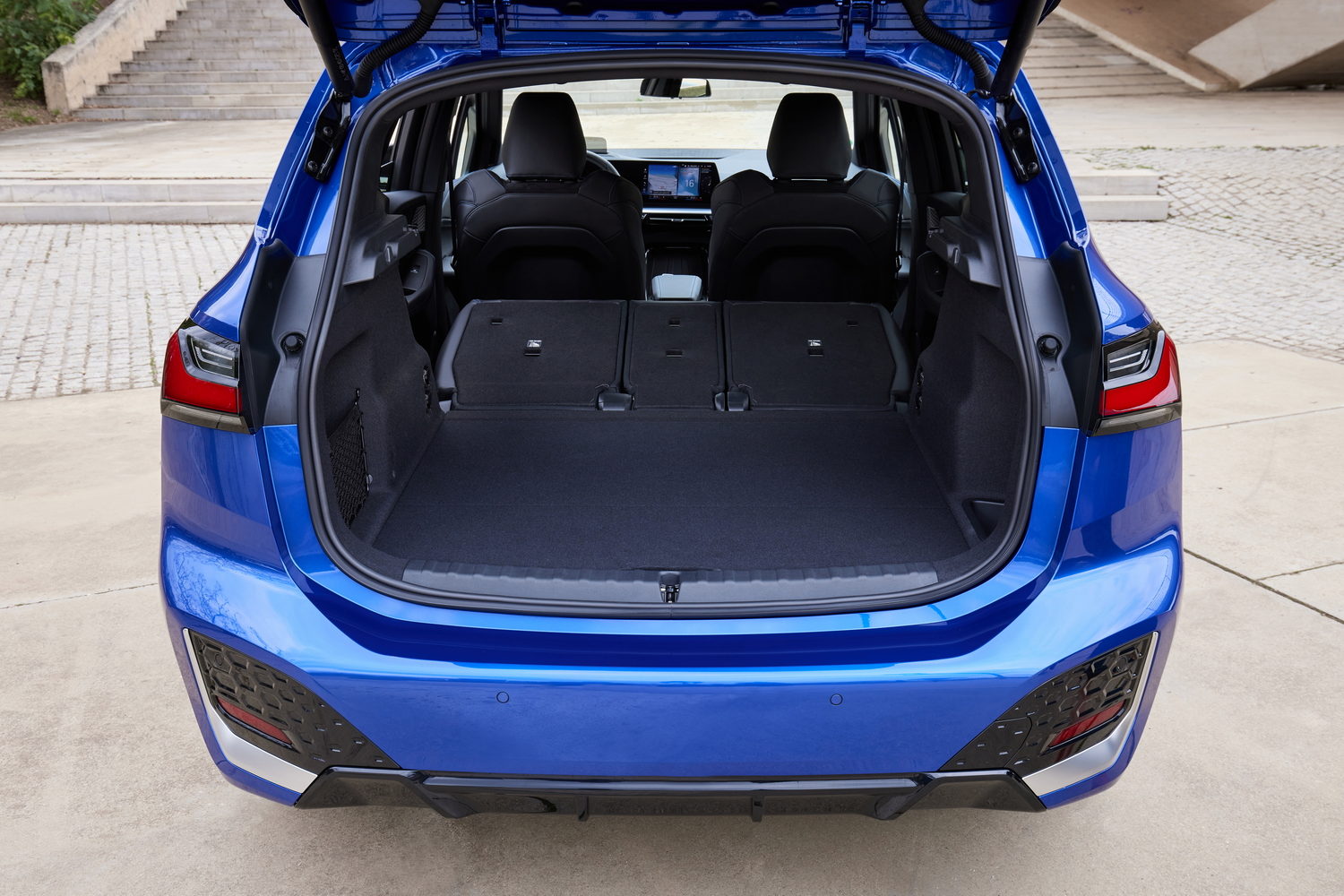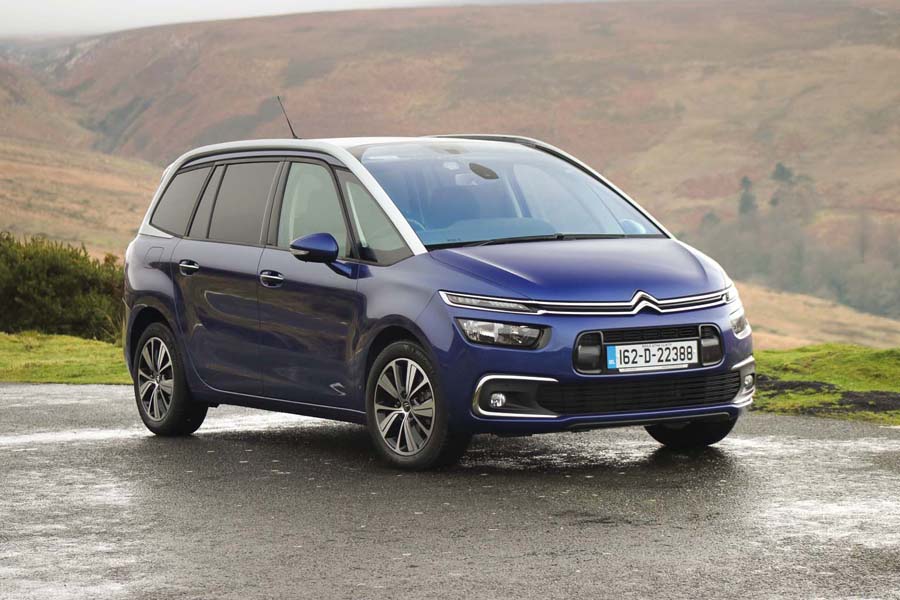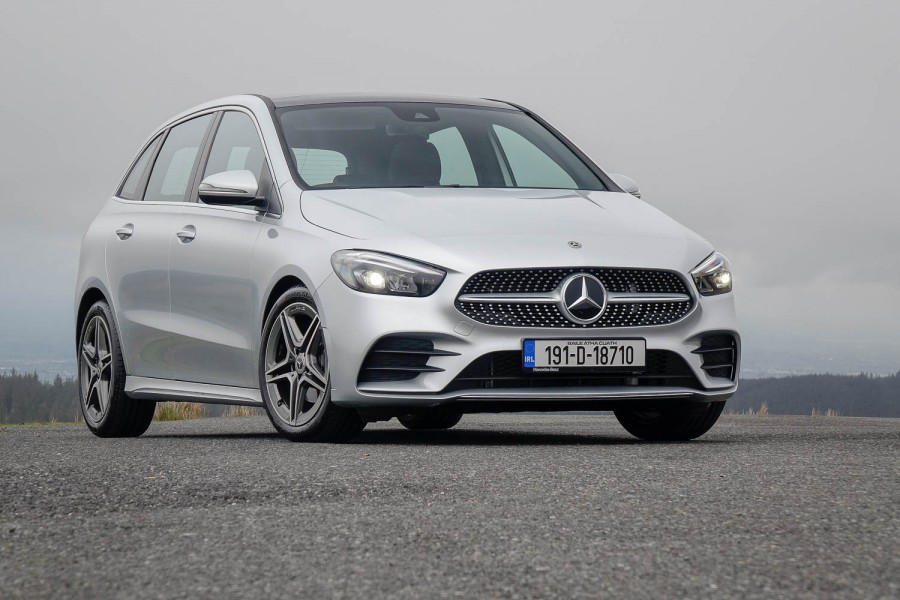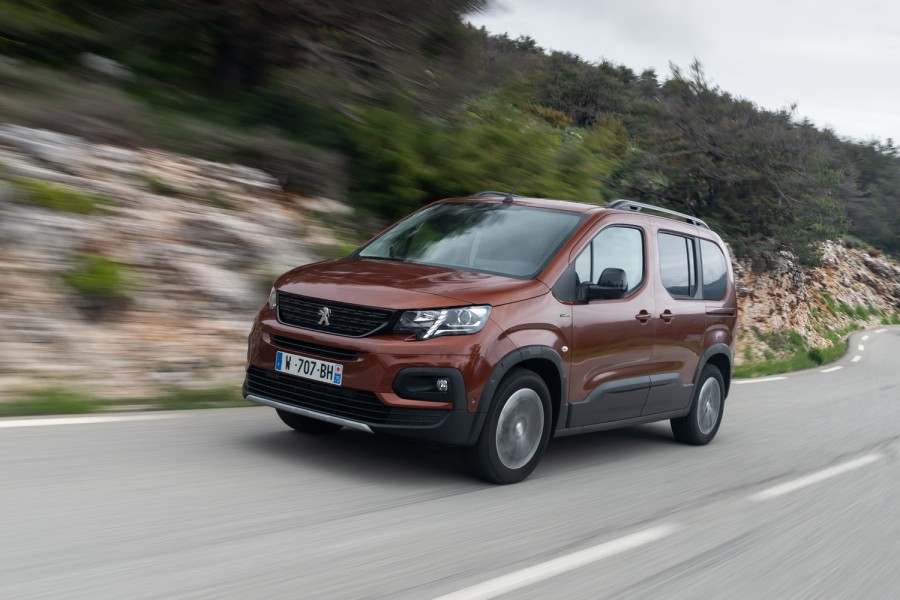The 2 Series Active Tourer might not sit all that comfortably with dyed-in-the-wool BMW aficionados, but with more than 400,000 sales notched up over the last eight years, there was plenty of reason for a second generation, and here we are. An all-new model maintains the functionality of the original (though the seven-seat Gran Tourer is no more) and adds more technology with improved engines and an interior that reaffirms its premium credentials.
In the metal
There are only so many ways to package a compact MPV, so BMW retains a similar silhouette for the new model, but has made the 2 Series Active Tourer slightly larger in every direction. An overall length of just under four metres and a width of 1.86 metres means that it will still fit into a typical parking space, while an array of cameras and some neat assistance systems makes that task easier than ever.
The low-floored boot is wide and has a 415-litre capacity that can do its bit for family and leisure life. The rear seats can slide fore and aft and be set to a fully upright 90 degrees to maximise load space. Alternatively, they can fold down flat to accommodate larger items, boosting volume to 1,405 litres. Models not equipped with the mild-hybrid system get a slightly larger carrying capacity.
Also bigger are the company's signature kidney grilles on the nose, a once-controversial element of BMW design that debuted on the 7 Series facelift. They emphasise a bluff front appearance that is enhanced by the vertical front bumper elements that are styled more aggressively on M Sport car shown here.
Flush fitting door handles are a new trend at BMW that debuted on the i4. They clean up the appearance and have a tactile quality to how they function. A generously proportioned glasshouse and larger wheel options combine with modest overhangs at either end to flatter the Active Tourer's side profile. There are more interesting lines and shapes to take in than on its chief rival, the Mercedes-Benz B-Class, though when you distil everything down, there is little to differentiate these MPVs from one another in the shape department.
BMW has put its best foot forward with the interior, though, which is a welcome improvement from its predecessor's busy, vertically stacked layout. Like the BMW iX, the new 2 Series Active Tourer uses a dual-screen curved display as the centrepiece; however, there's a more conventional round steering wheel fitted here. As the touchscreen is nearer to the driver, BMW reasoned that there's no need for the iDrive controller, making it the first model since the Z8 roadster not to have one.
Furthermore, with manual gearboxes no longer available for this model, there is now a small toggle switch for selecting forward or reverse, which again frees up more space around the centre console. That is a layered affair, with a fixed element jutting out from the centre armrest leaving the sides open, thus making items far more accessible than searching for them inside an enclosed storage bin. There are a couple of cupholders and a wireless charging pad featuring a rollercoaster-style bar to hold your smartphone in place vertically.
The rest of the cabin is typical BMW fare, which in M Sport guise includes bolstered front seats and Alcantara and Sensatec trim with blue contrast stitching. Rear passenger space - something that is particularly relevant in this segment - is reasonably good with shapely front seatbacks that add precious extra millimetres of legroom, and a versatile split seating layout allows for numerous different positions. The additional 21mm that the Active Tourer has grown in height benefits interior headroom.
Driving it
Choosing the right engine for the Active Tourer is something that BMW hasn't made all that easy for prospective buyers. The 223i petrol variant assessed here is a great all-rounder due to its four-cylinder configuration. Over longer journeys and motorways, it has an extra layer of refinement over the three-cylinder 220i. There is smooth acceleration and the seven-speed dual-clutch automatic gearbox does a well-rounded job of shifting gears smoothly and without fuss or jerkiness.
With 218hp on tap, this Active Tourer feels reasonably brisk. Accelerating up to 100km/h takes seven seconds from rest and it will comfortably cruise at motorway speed limits without sounding strained in any way. An ample 360Nm of torque gives it plenty of shove when you need to perform a quick overtake, too, for example. The 48-volt mild hybrid system contributes 19hp and 55Nm, adding another layer of smoothness to the whole operation. Rolling off the accelerator at higher speeds will see the engine seamlessly slip into a coasting mode to conserve fuel. The stop-start process of the combustion engine in traffic is also quieter and less intrusive.
BMW was keen to ensure that its core values for driving enjoyment weren't glossed over in this more practical vehicle, and plenty of work has gone into making it a car that is more refined to drive. That smooth-running engine is complemented by cleaner aerodynamics for less wind noise at higher speeds.
Increasing the width of the front and rear wheel tracks by 25- and 26mm respectively over the previous generation helps to enhance the handling characteristics. The ride height is reduced by 15mm in M Sport models and BMW also adds frequency-selective damping. That all translates into a car that has little in the way of body lean during corning, so it remains more level during left to right direction changes. What you do feel when driving is that much of the weight seems to be low down in the car, unlike in an SUV. That contributes to a more positive sensation when you turn into a corner. The Active Tourer is a car that handles more keenly than most prospective buyers will ever demand, but it's good to know that it's there should it ever be called upon to perform.
What you get for your money
With prices starting at €41,325, the 2 Series Active Tourer undercuts its nearest rival, the B-Class, by over €1,100 and is cheaper than a BMW X1, too. There are three specification grades available: Sport, Luxury and M Sport, while BMW will boost the choice of two petrol engines and a single diesel power unit with a plug-in hybrid model in time.
The M Sport trim tested here starts at €46,790, making it the most expensive version. This gets a decent spread of equipment beginning on the outside with 19-inch alloy wheels, different bumpers, black window surrounds and the special upholstery inside as mentioned above. Front heated seats, parking assist, high beam assist, sliding rear seats and BMW's Connected Package Professional are included as standard, too.
Summary
This time around BMW has given the 2 Series Active Tourer an interior that looks and feels every bit as premium as its other cars - something that wasn't entirely true of the first generation - and it drives with a level of responsiveness and quality that buyers will expect. The 223i has a sweet engine and it's not lacking in refinement, but when the plug-in hybrid arrives, it could take its place as the default choice.

